.
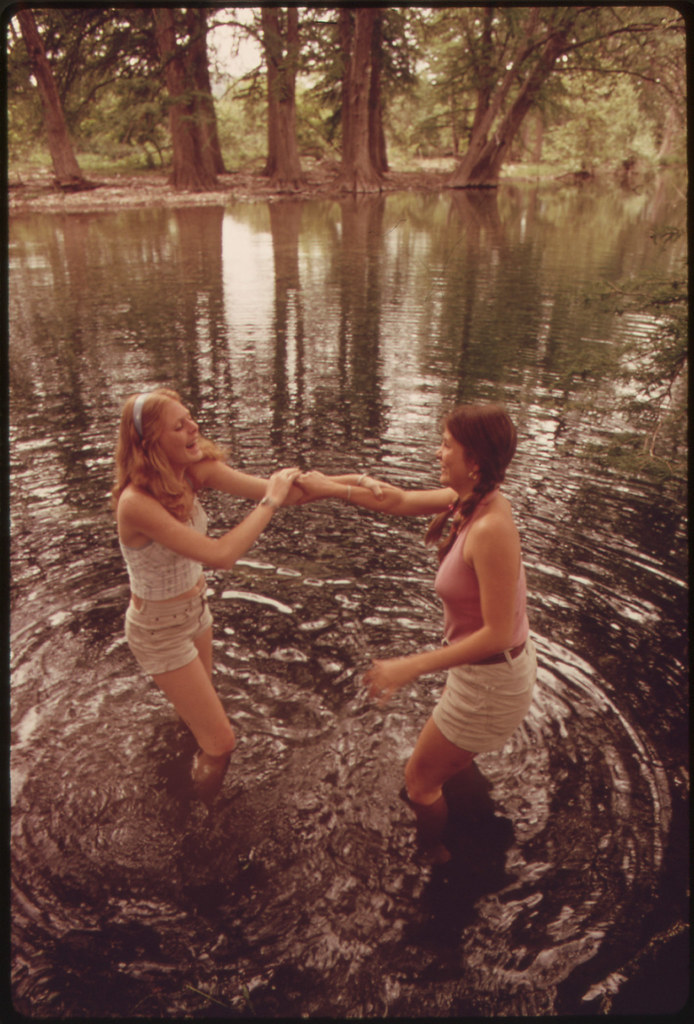
Teenage girls wading the Frio Canyon River near Leakey Texas, while
on an outing with friends near San Antonio: photo by Marc St. Gil, May 1973
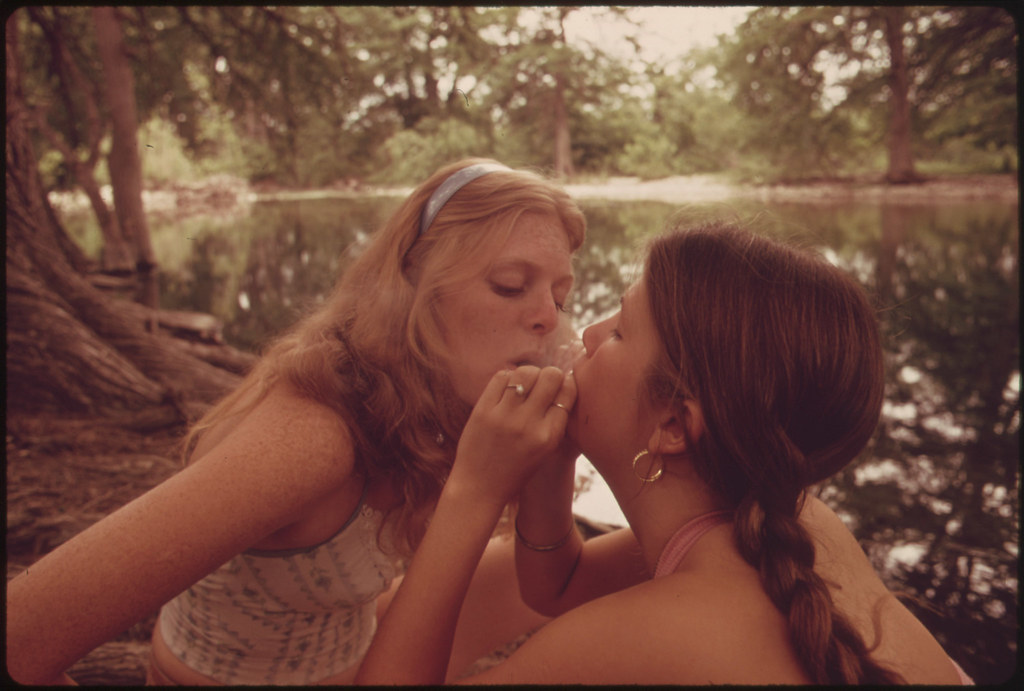
Two girls smoking pot during an outing in Cedar Woods near Leakey, Texas. (Taken with permission.): photo by Marc St. Gil, May 1973
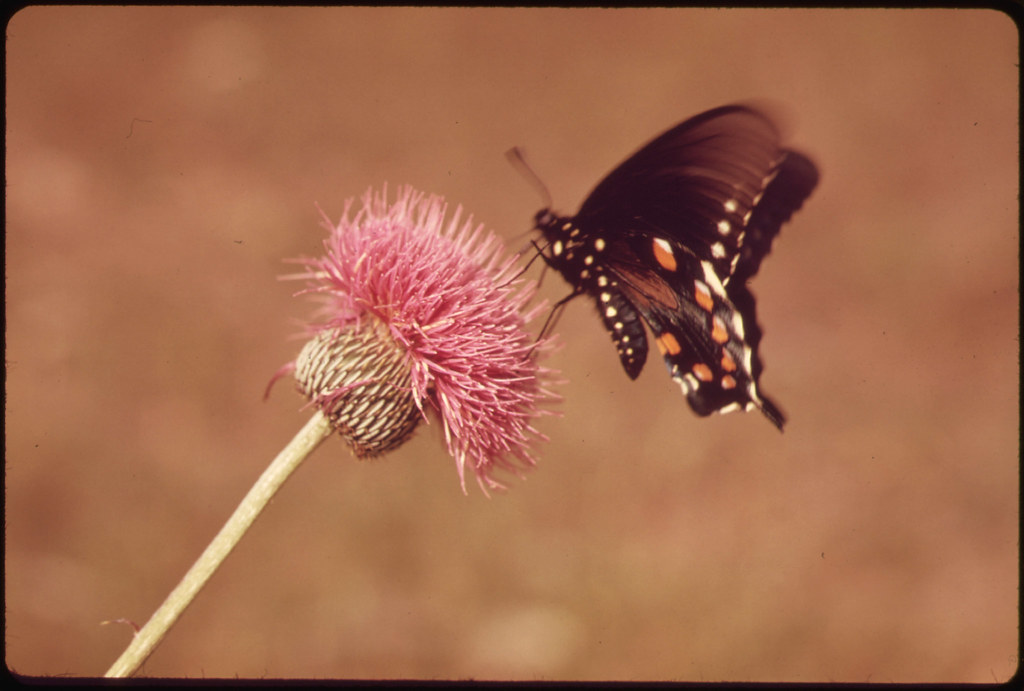
Milk wort and butterfly in the Texas countryside, near San Antonio: photo by Marc St. Gil, June 1973
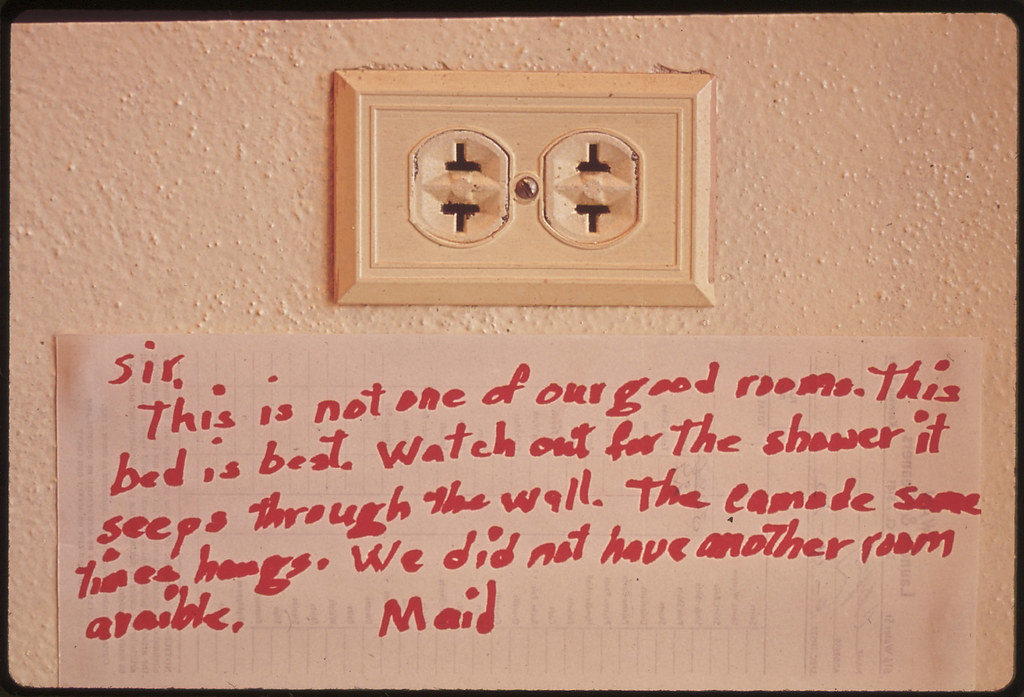
Message on the wall in the Frio Canyon Lodge, Leakey, Texas: photo by Marc St. Gil, July 1972
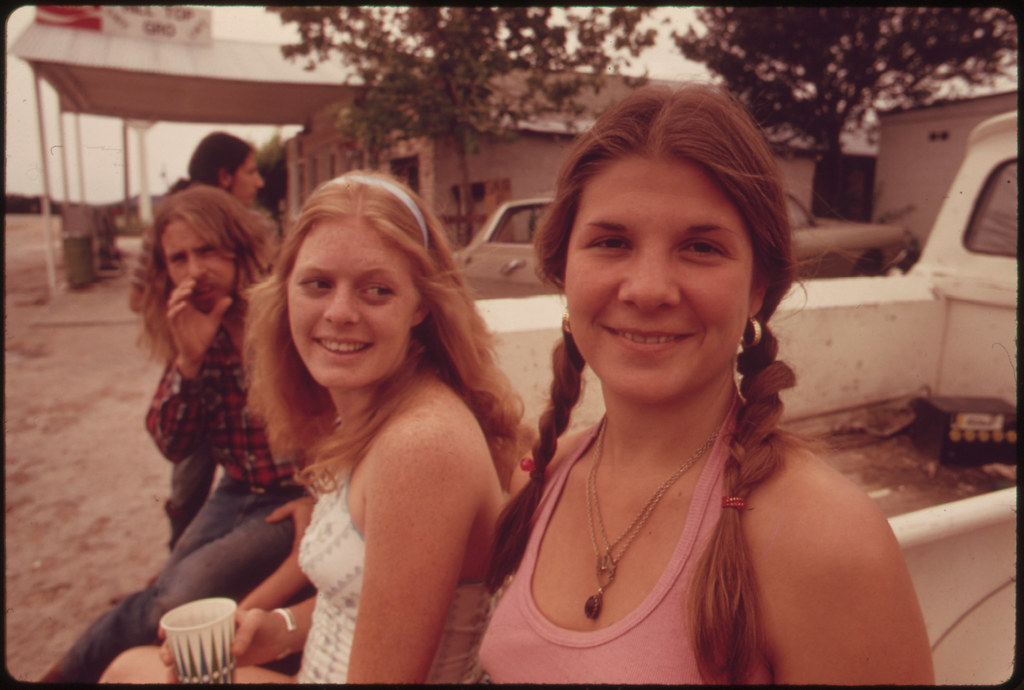
Group of teenagers in the town of Leakey Texas, near San Antonio: photo by Marc St. Gil, May 1973

One girl smokes pot while her friend watches during an outing in Cedar Woods near Leakey, Texas. (Taken with permission.): photo by Marc St. Gil, May 1973
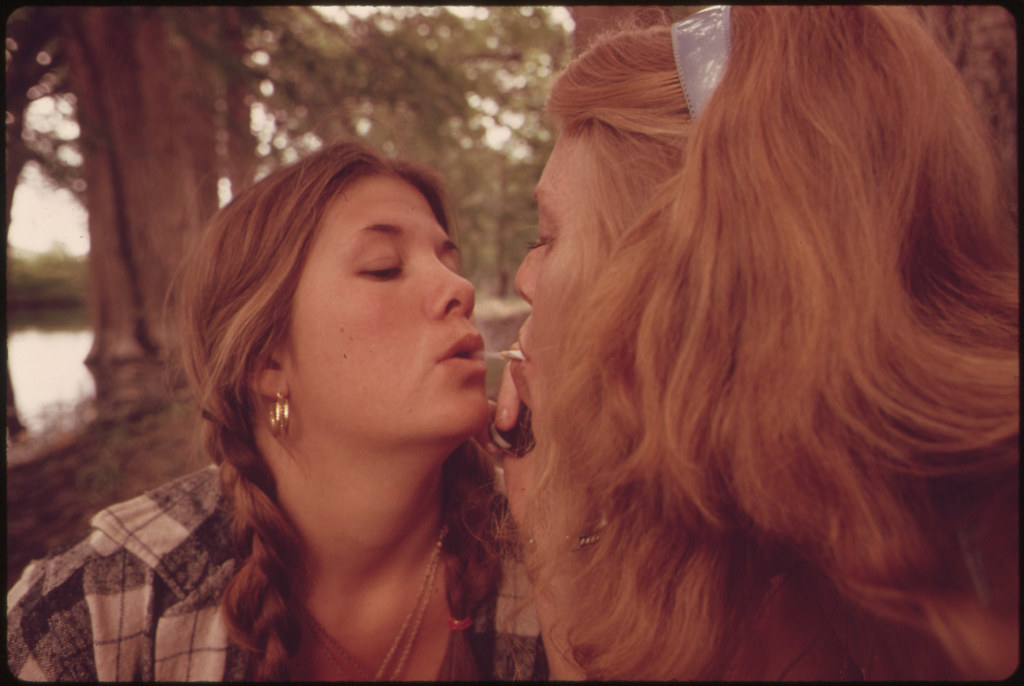
Two girls smoking pot during an outing in Cedar Woods near Leakey, Texas. (Taken with permission.): photo by Marc St. Gil, May 1973
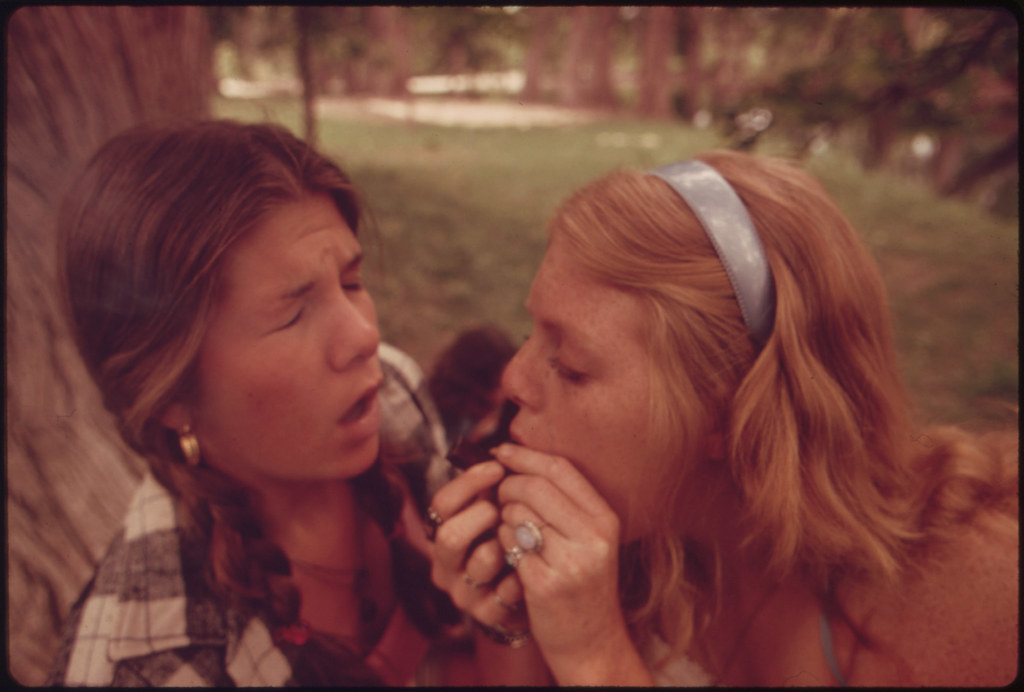
Two girls smoking pot during an outing in Cedar Woods near Leakey, Texas. (Taken with permission.): photo by Marc St. Gil, May 1973
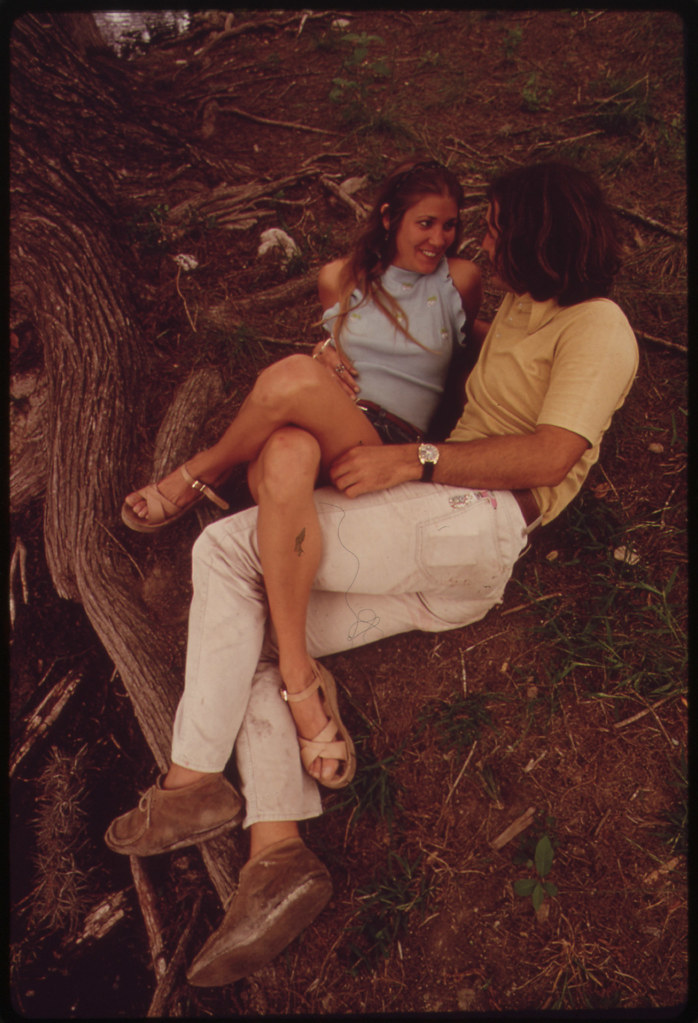
Teenagers enjoy each other's company on the banks of the Frio Canyon River near Leakey, Texas: photo by Marc St. Gil, May 197
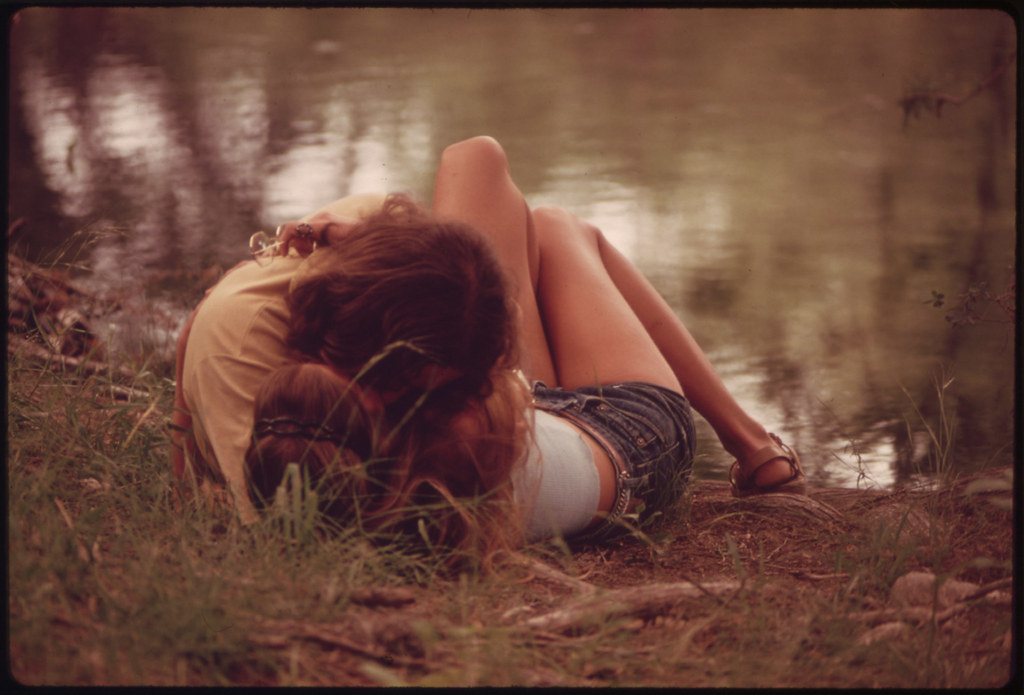
Teenage couple embracing on the banks of the Frio Canyon River near Leakey, Texas: photo by Marc St. Gil, May 1973
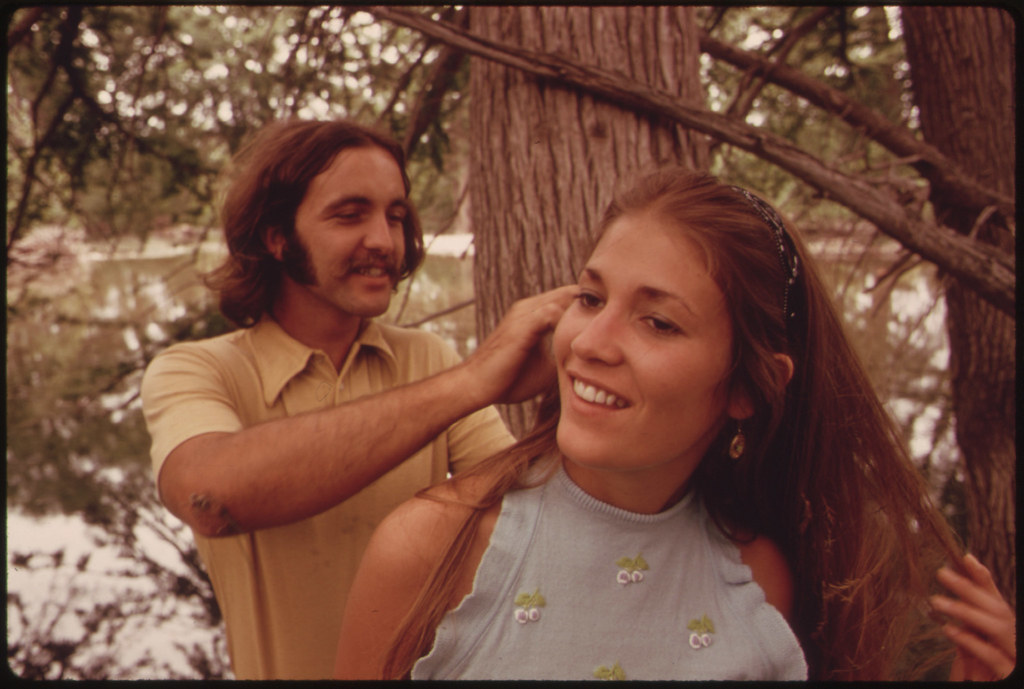
Young man picks leaves from his girl's hair after they had embraced on the banks of the Frio Canyon River near Leakey, Texas: photo by Marc St. Gil, May 1973
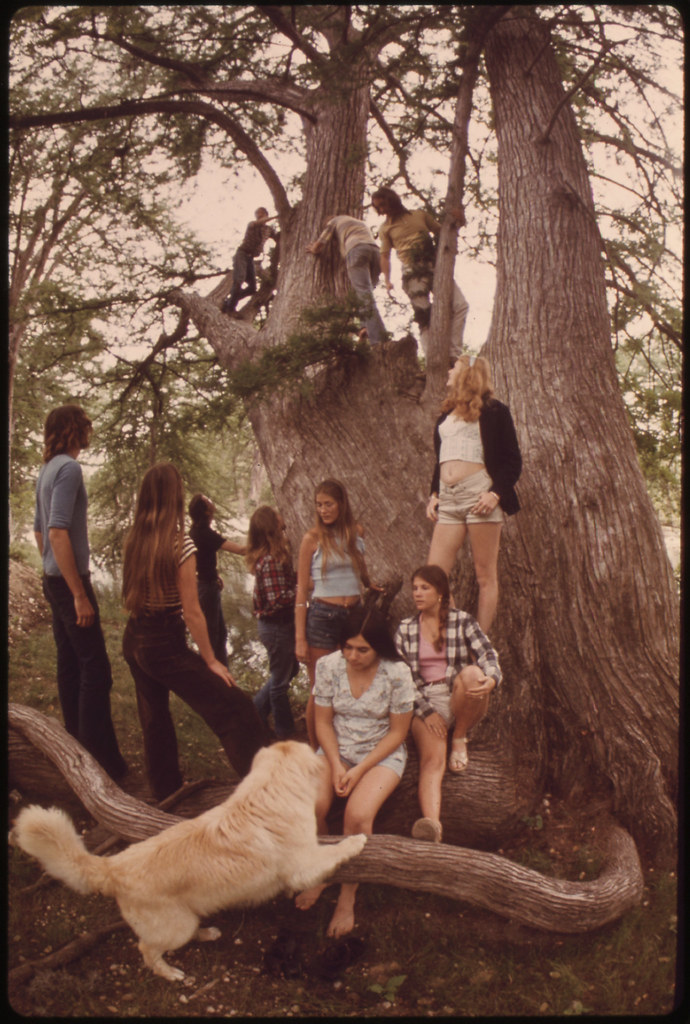
Area young people gather in the cedar woods by the Frio Canyon River near Leakey, Texas, near San Antonio: photo by Marc St. Gil, May 1973

Leakey's Church of Christ after Sunday services, Texas: photo by Marc St. Gil, July 1972
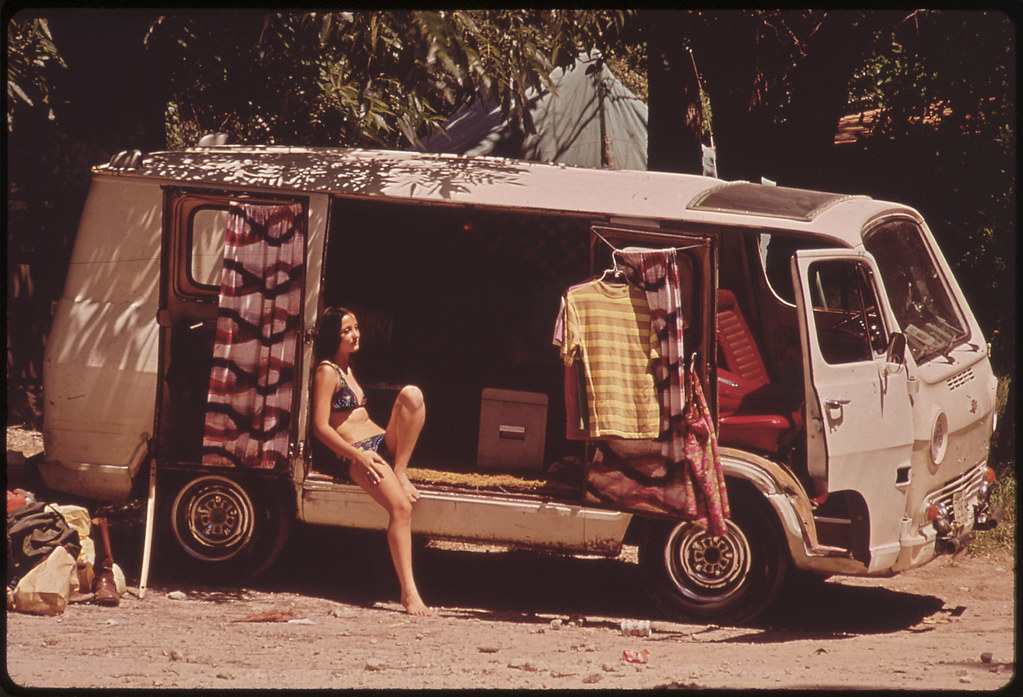
Campers at Garner State Park: photo by Marc St. Gil, July 1972
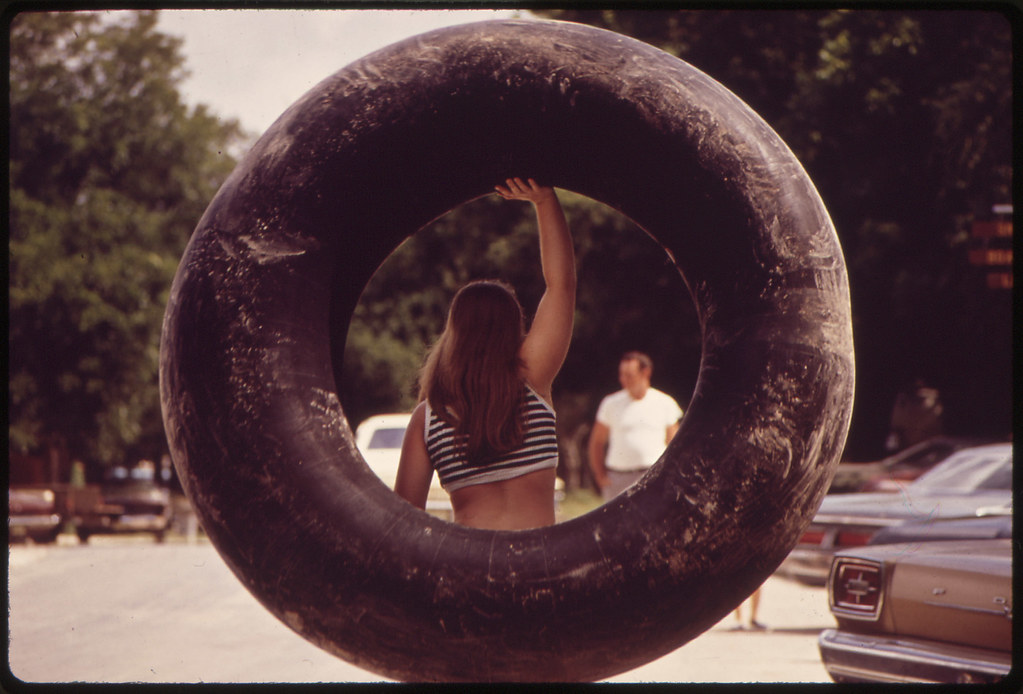
Campers in Garner State Park: photo by Marc St. Gil, July 1972
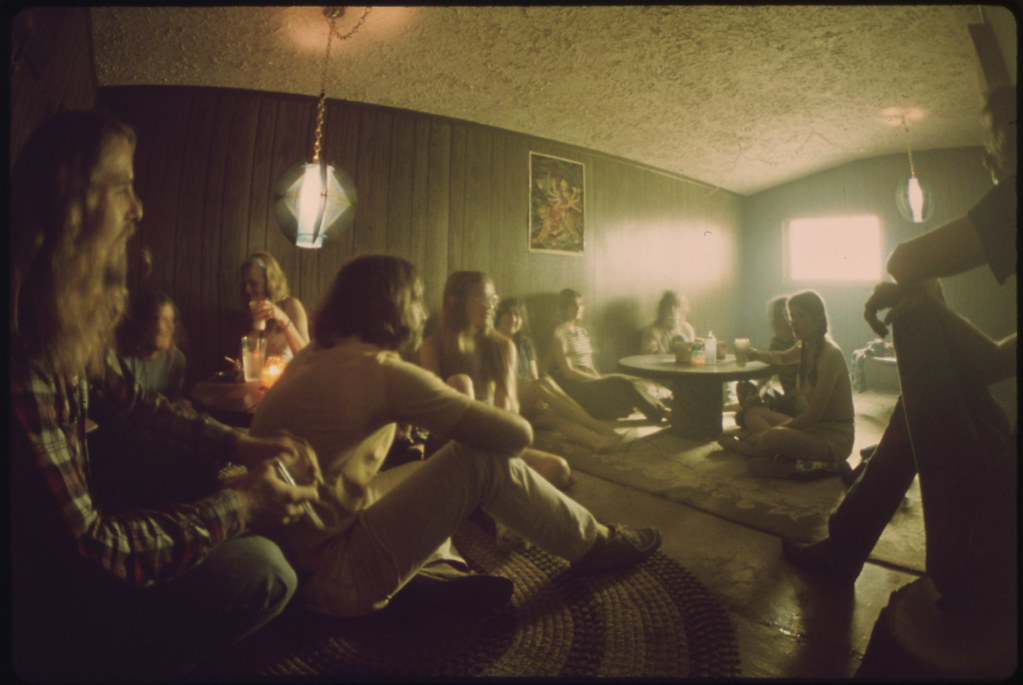
Den behind a store which caters to the teenage group in Leakey, Texas, a small town near San Antonio: photo by Marc St. Gil, May 1973
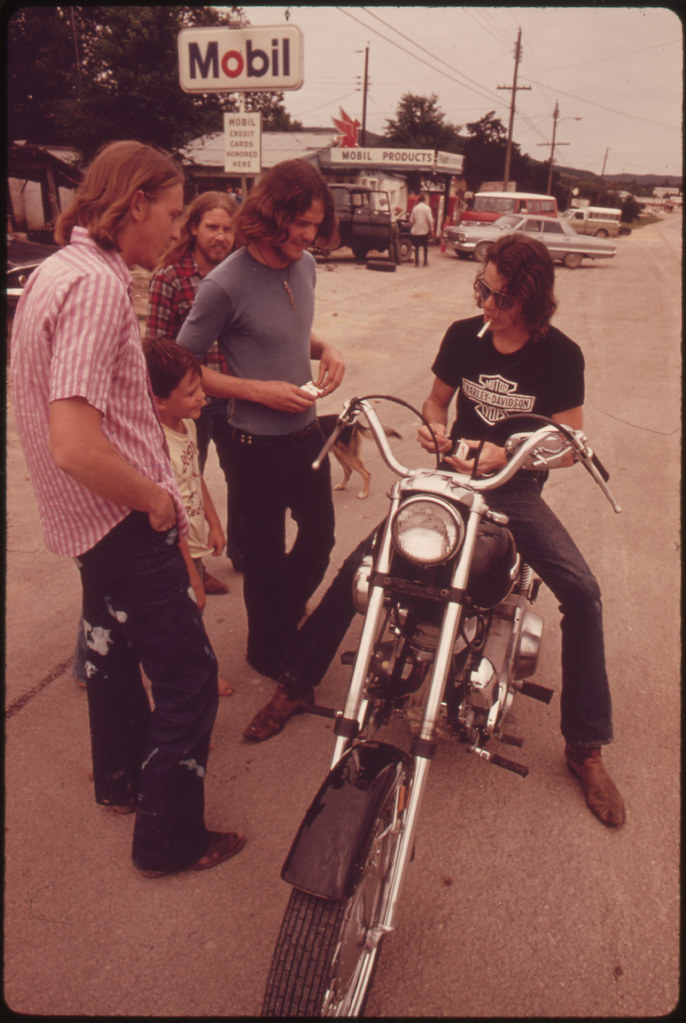
Motorcyclist from Leakey, Texas stops to talk with friends near San Antonio: photo by Marc St. Gil, May 1973
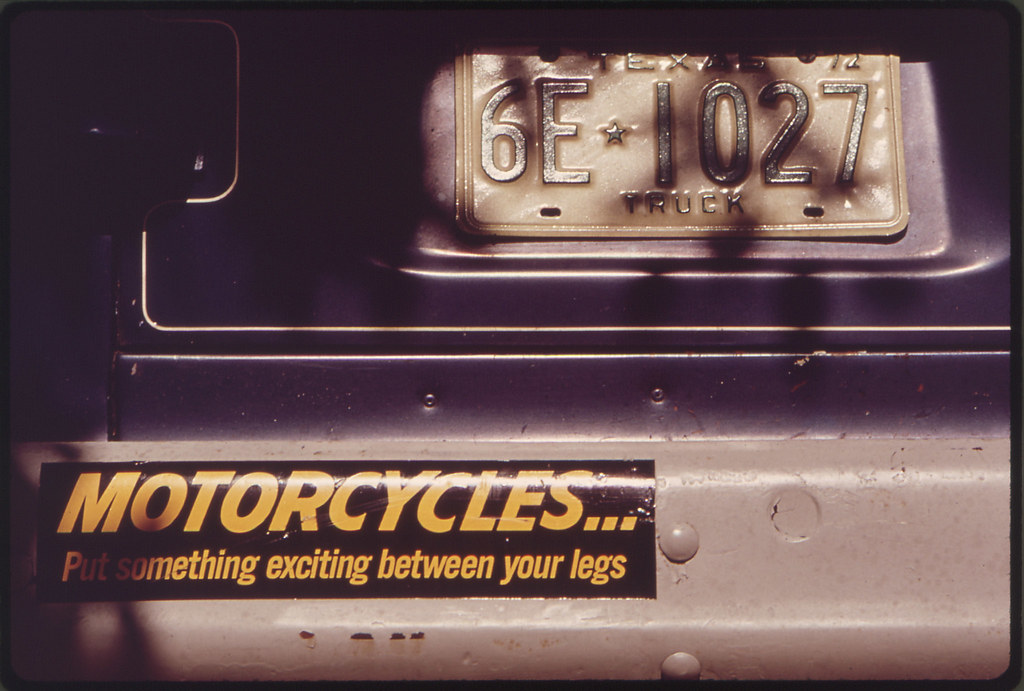
Leakey, Texas: photo by Marc St. Gil, June 1972
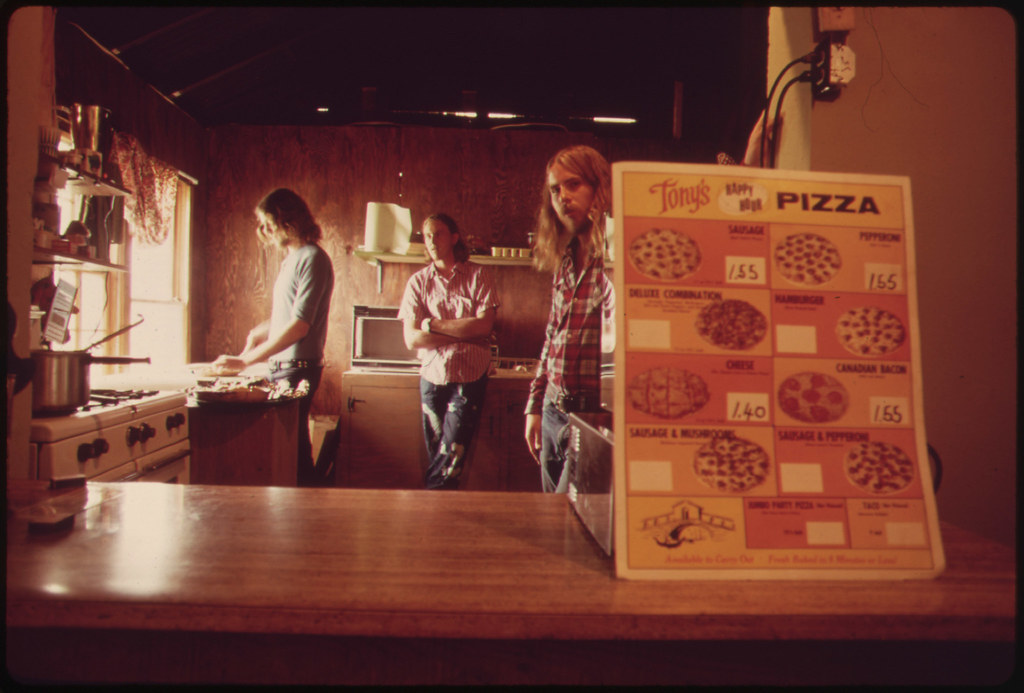
Pizza place in the town of Leakey, Texas, near San Antonio: photo by Marc St. Gil, May 1973

Miss Junior Texas, shown with friends in her home town of Leakey, Texas, near San Antonio: photo by Marc St. Gil, May 1973
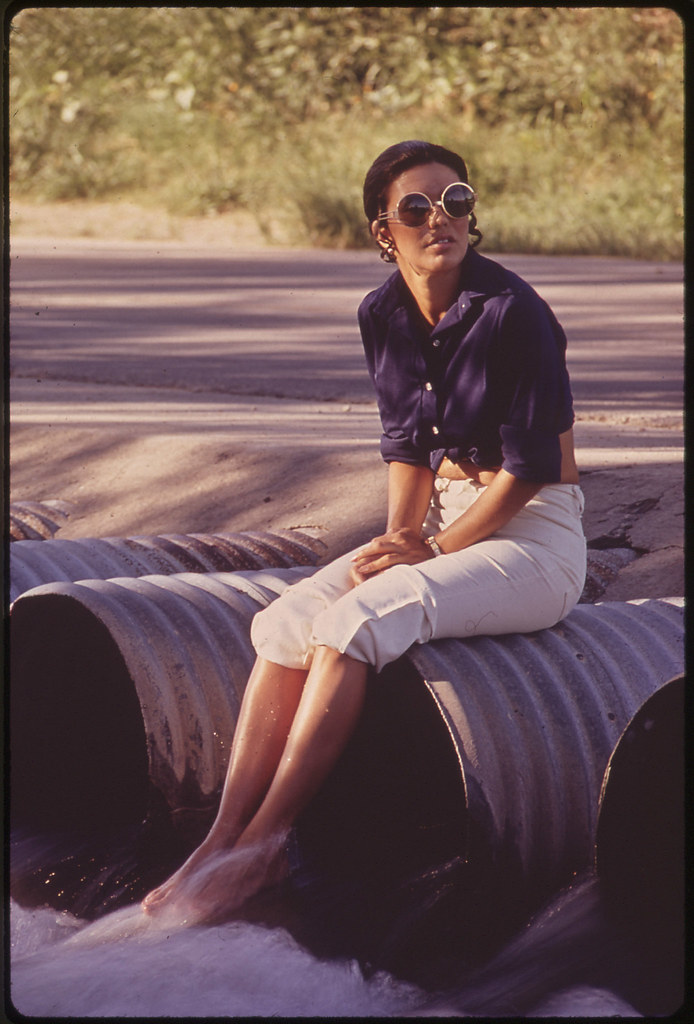
Leakey resident cooling her feet in the Rio Frio: photo by Marc St. Gil, July 1972
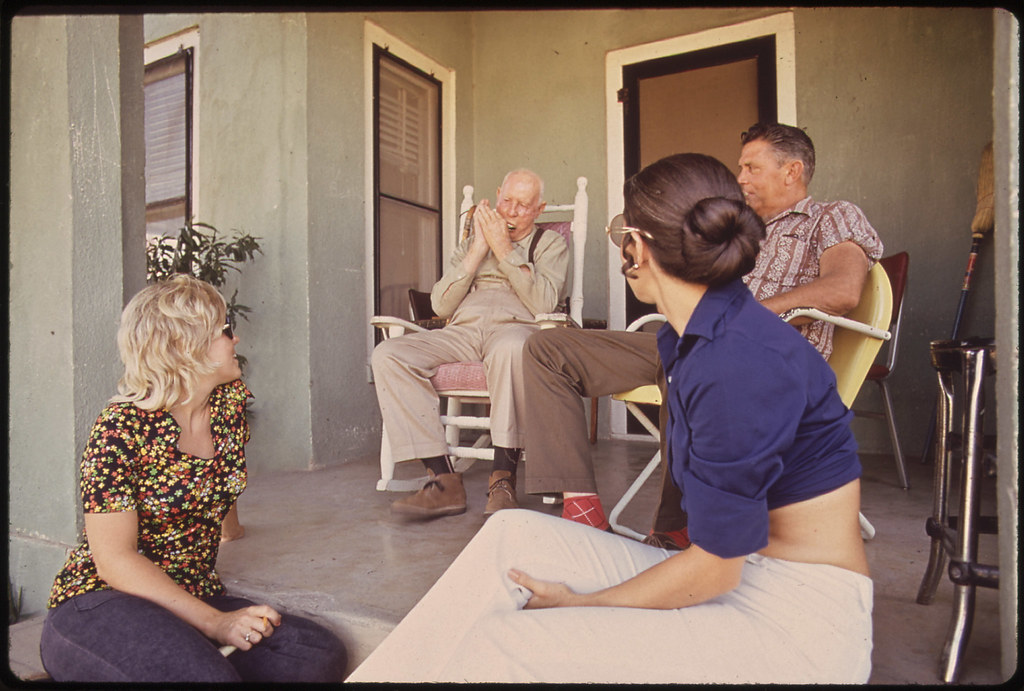
Leakey residents. The man playing the harmonica is 92 years old: photo by Marc St. Gil, July 1972
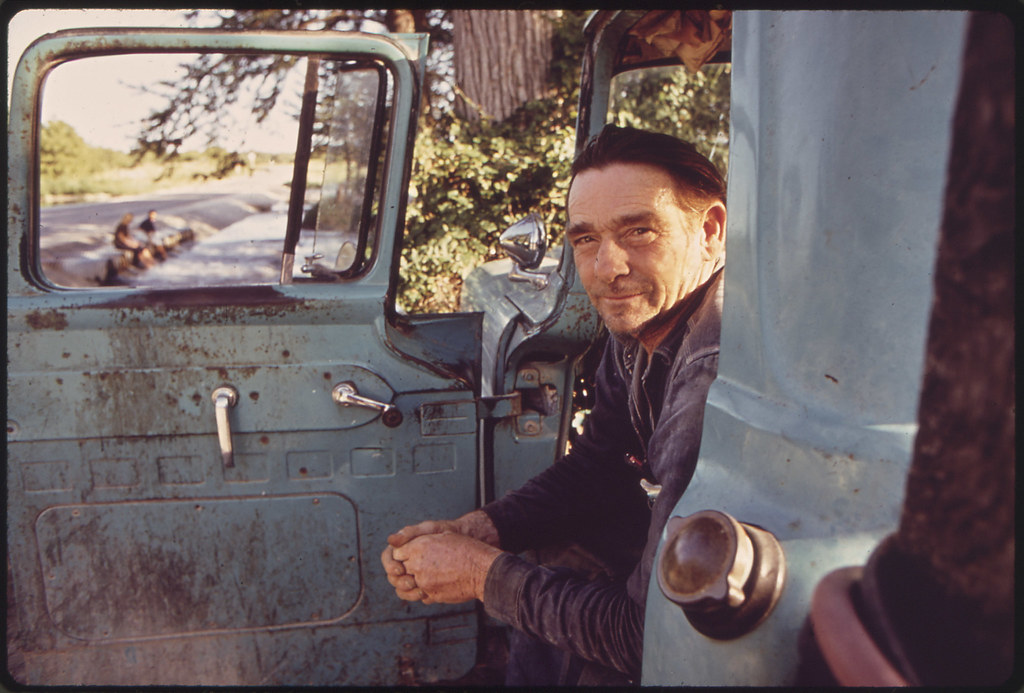
Woodrow Wilson, one of Leakey's local characters, in his pickup. He never works, but sits staring at the river at the outskirts of town from 7 A.M. to sunset: photo by Marc St. Gil, June 1972
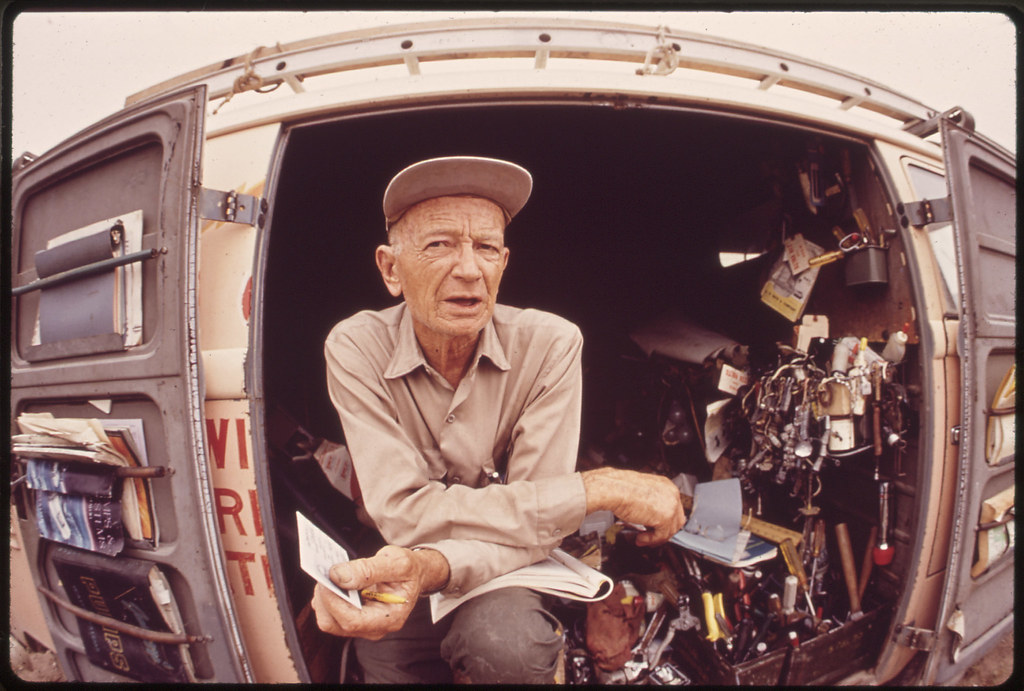
Mayor Casey in the truck that is is traveling "office". He uses the doors as his "files": photo by Marc St. Gil, June 1972

W.B. Leistikon, 70, and John Ricks, 87, in front of the local drugstore in Leakey. Stumps in front of store are reserved for the "old timers": photo by Marc St. Gil, November 1972
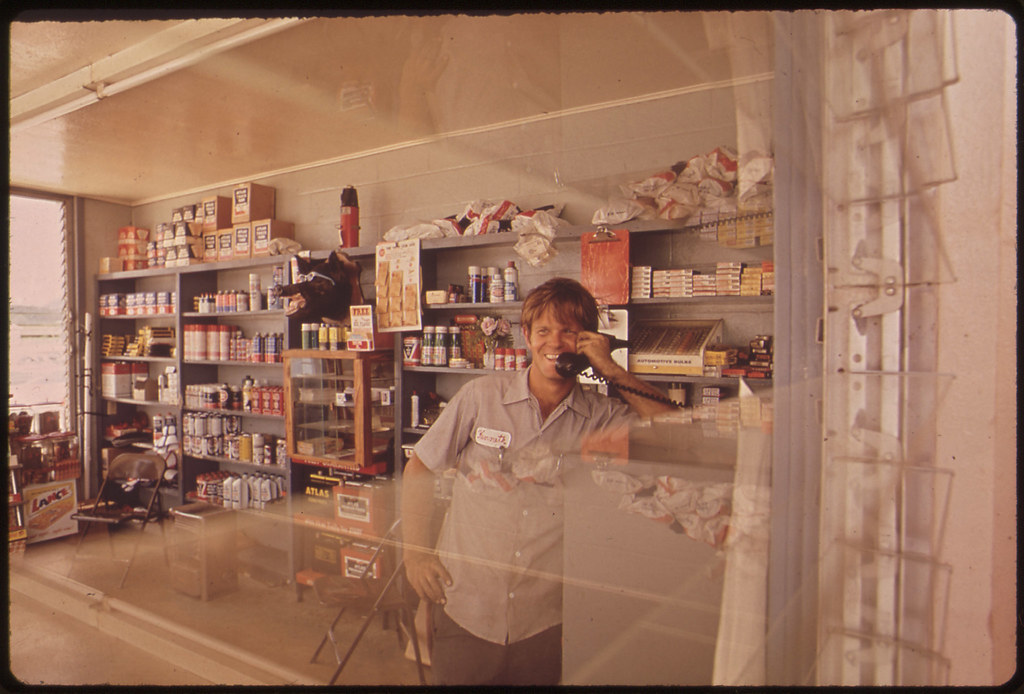
Leakey drug store: photo by Marc St. Gil, July 1972

Woman owner in her grocery store in Leakey, Texas, with a friend: photo by Marc St. Gil, May 1973
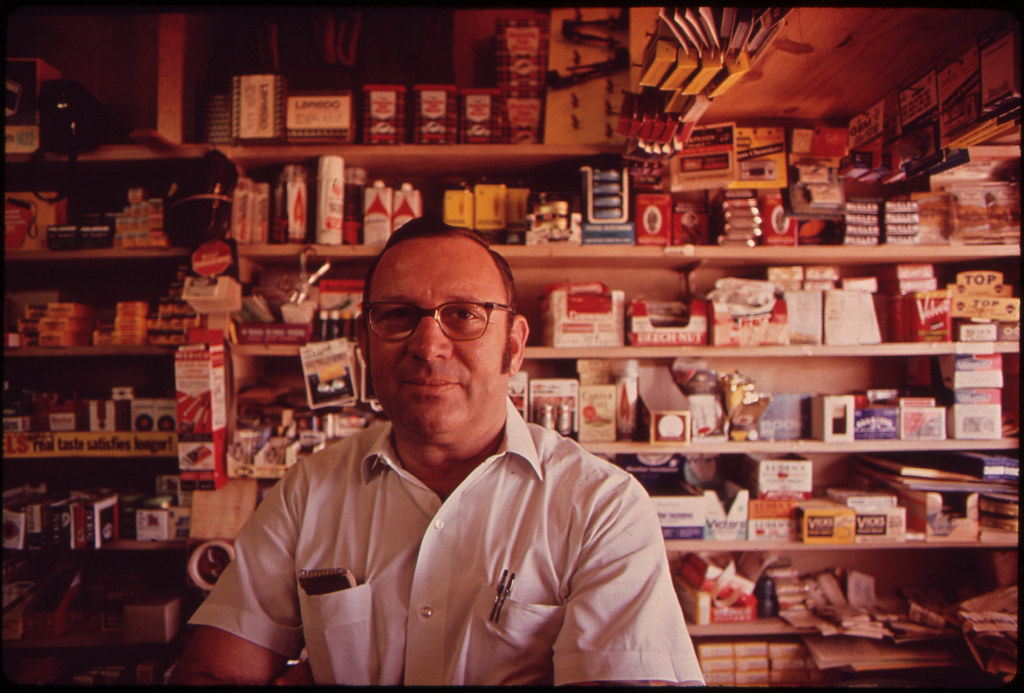
Morris Fisher, owner of the local grocery and drug store in Leakey, Texas: photo by Marc St. Gil, November 1973
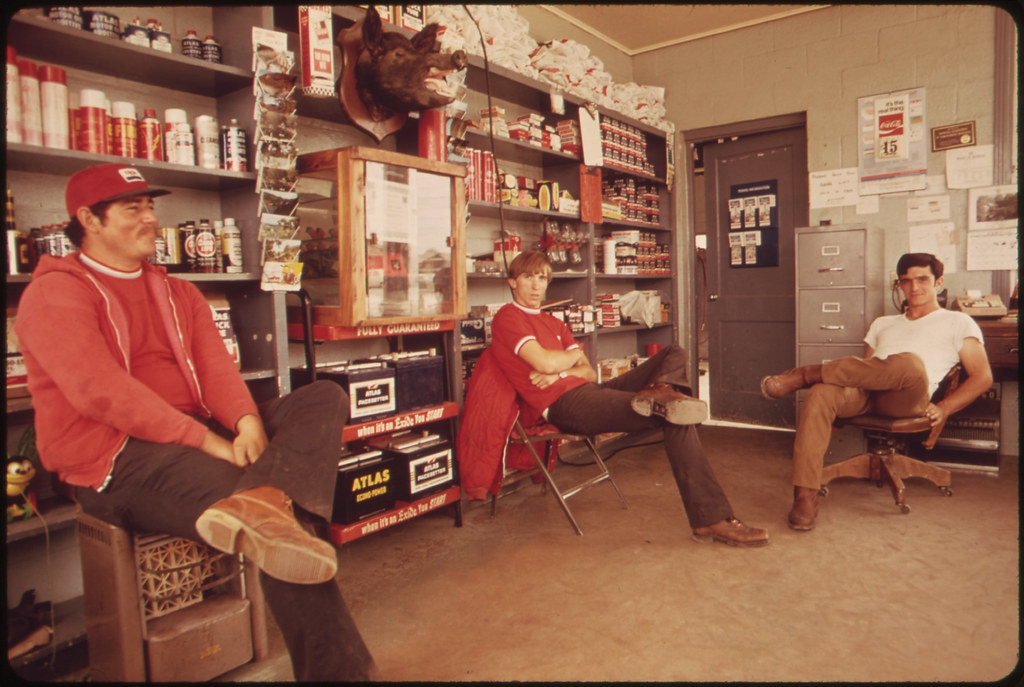
Interior of a local gas station in Leakey, Texas, during the noon hour: photo by Marc St. Gil, May 1973
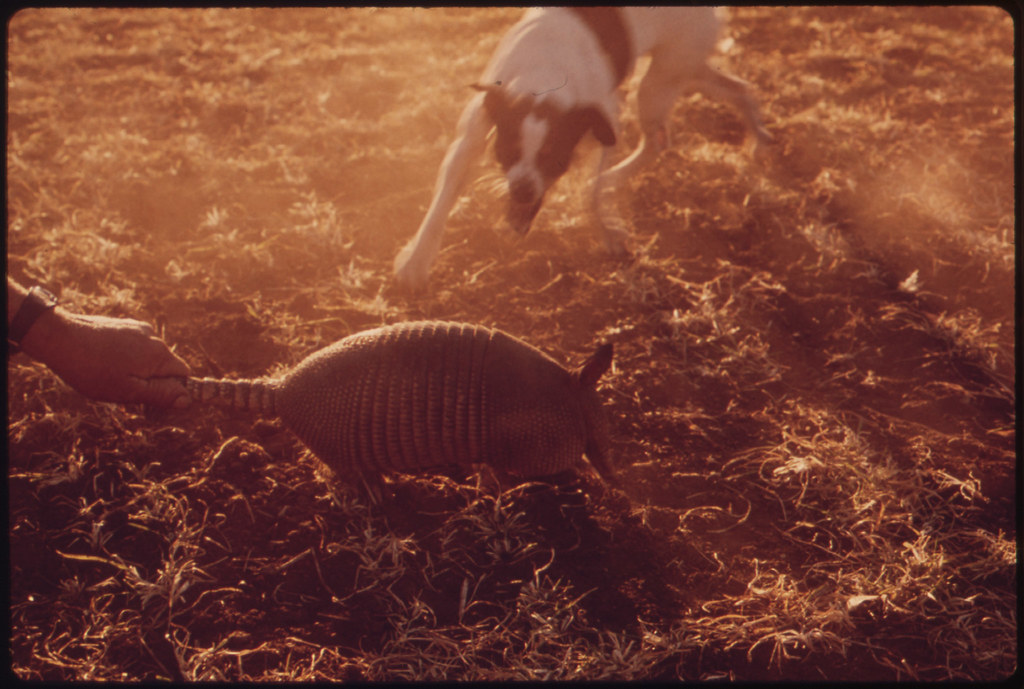
A dog attacks an armdillo on a farm near Leakey, Texas, near San Antonio: photo by Marc St. Gil, December 1973
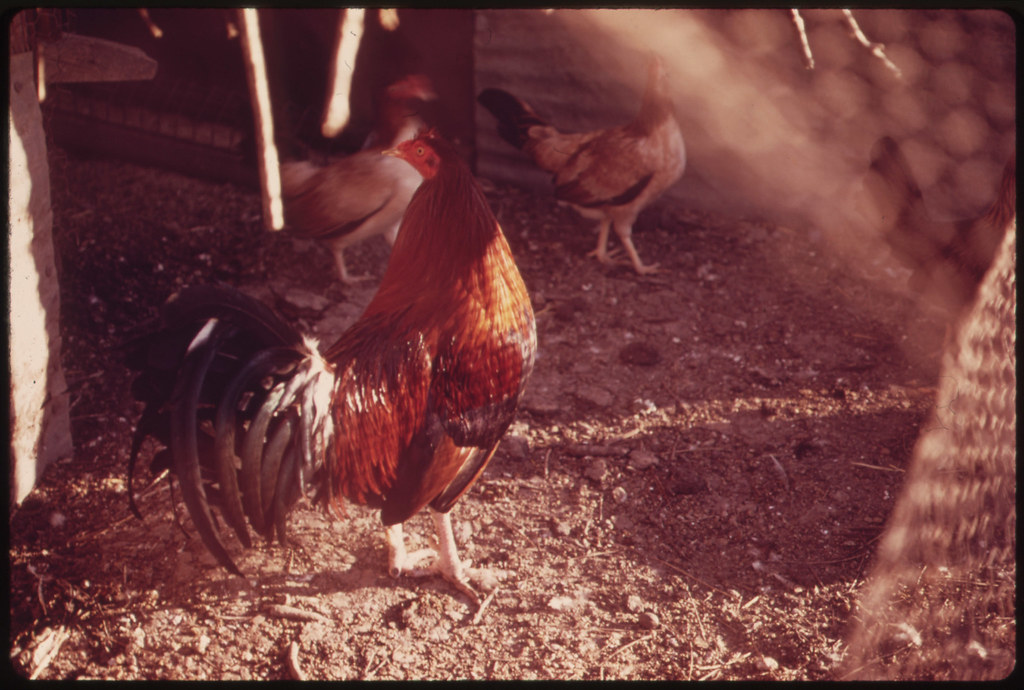
Gamecocks raised for fighting near Leakey, Texas, near San Antonio: photo by Marc St. Gil, December 1973
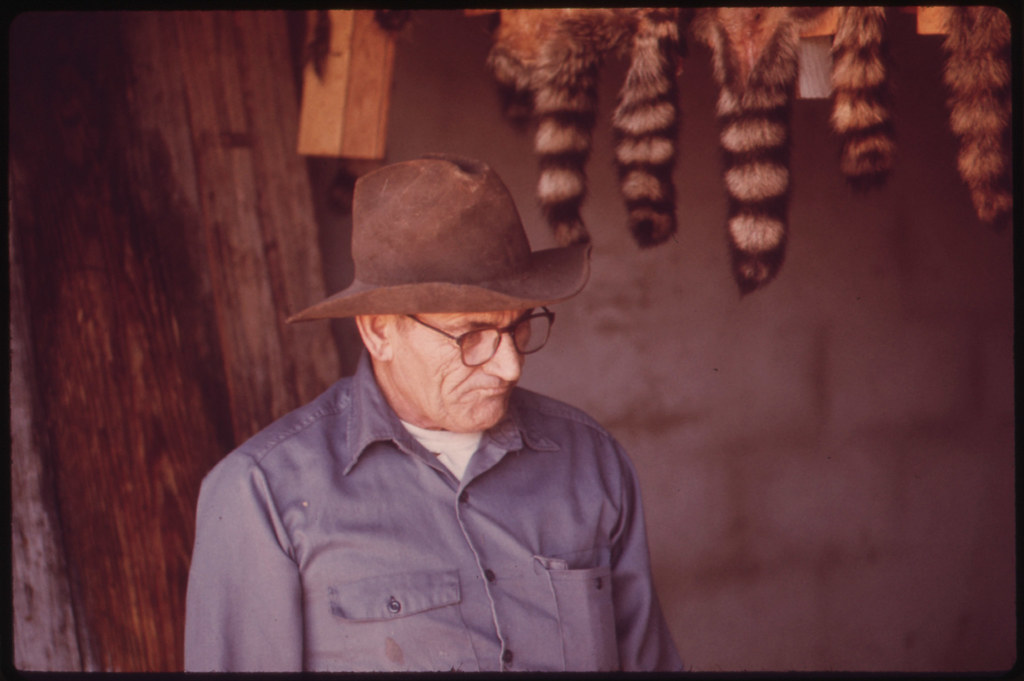
Raccoon tails hang from the ceiling of a fur buyer's shop in Leakey, Texas, near San Antonio: photo by Marc St. Gil, December 1973


Two girls smoking pot during an outing in Cedar Woods near Leakey, Texas. (Taken with permission.): photo by Marc St. Gil, May 1973

Milk wort and butterfly in the Texas countryside, near San Antonio: photo by Marc St. Gil, June 1973

Message on the wall in the Frio Canyon Lodge, Leakey, Texas: photo by Marc St. Gil, July 1972

Group of teenagers in the town of Leakey Texas, near San Antonio: photo by Marc St. Gil, May 1973

One girl smokes pot while her friend watches during an outing in Cedar Woods near Leakey, Texas. (Taken with permission.): photo by Marc St. Gil, May 1973

Two girls smoking pot during an outing in Cedar Woods near Leakey, Texas. (Taken with permission.): photo by Marc St. Gil, May 1973

Two girls smoking pot during an outing in Cedar Woods near Leakey, Texas. (Taken with permission.): photo by Marc St. Gil, May 1973

Teenagers enjoy each other's company on the banks of the Frio Canyon River near Leakey, Texas: photo by Marc St. Gil, May 197

Teenage couple embracing on the banks of the Frio Canyon River near Leakey, Texas: photo by Marc St. Gil, May 1973

Young man picks leaves from his girl's hair after they had embraced on the banks of the Frio Canyon River near Leakey, Texas: photo by Marc St. Gil, May 1973

Area young people gather in the cedar woods by the Frio Canyon River near Leakey, Texas, near San Antonio: photo by Marc St. Gil, May 1973

Leakey's Church of Christ after Sunday services, Texas: photo by Marc St. Gil, July 1972

Campers at Garner State Park: photo by Marc St. Gil, July 1972

Campers in Garner State Park: photo by Marc St. Gil, July 1972

Den behind a store which caters to the teenage group in Leakey, Texas, a small town near San Antonio: photo by Marc St. Gil, May 1973

Motorcyclist from Leakey, Texas stops to talk with friends near San Antonio: photo by Marc St. Gil, May 1973

Leakey, Texas: photo by Marc St. Gil, June 1972

Pizza place in the town of Leakey, Texas, near San Antonio: photo by Marc St. Gil, May 1973

Miss Junior Texas, shown with friends in her home town of Leakey, Texas, near San Antonio: photo by Marc St. Gil, May 1973

Leakey resident cooling her feet in the Rio Frio: photo by Marc St. Gil, July 1972

Leakey residents. The man playing the harmonica is 92 years old: photo by Marc St. Gil, July 1972

Woodrow Wilson, one of Leakey's local characters, in his pickup. He never works, but sits staring at the river at the outskirts of town from 7 A.M. to sunset: photo by Marc St. Gil, June 1972

Mayor Casey in the truck that is is traveling "office". He uses the doors as his "files": photo by Marc St. Gil, June 1972

W.B. Leistikon, 70, and John Ricks, 87, in front of the local drugstore in Leakey. Stumps in front of store are reserved for the "old timers": photo by Marc St. Gil, November 1972

Leakey drug store: photo by Marc St. Gil, July 1972

Woman owner in her grocery store in Leakey, Texas, with a friend: photo by Marc St. Gil, May 1973

Morris Fisher, owner of the local grocery and drug store in Leakey, Texas: photo by Marc St. Gil, November 1973

Interior of a local gas station in Leakey, Texas, during the noon hour: photo by Marc St. Gil, May 1973

A dog attacks an armdillo on a farm near Leakey, Texas, near San Antonio: photo by Marc St. Gil, December 1973

Gamecocks raised for fighting near Leakey, Texas, near San Antonio: photo by Marc St. Gil, December 1973

Raccoon tails hang from the ceiling of a fur buyer's shop in Leakey, Texas, near San Antonio: photo by Marc St. Gil, December 1973

Trees at sunset near near Leakey, Texas and San Antonio: photo by Marc St. Gil, December 1973
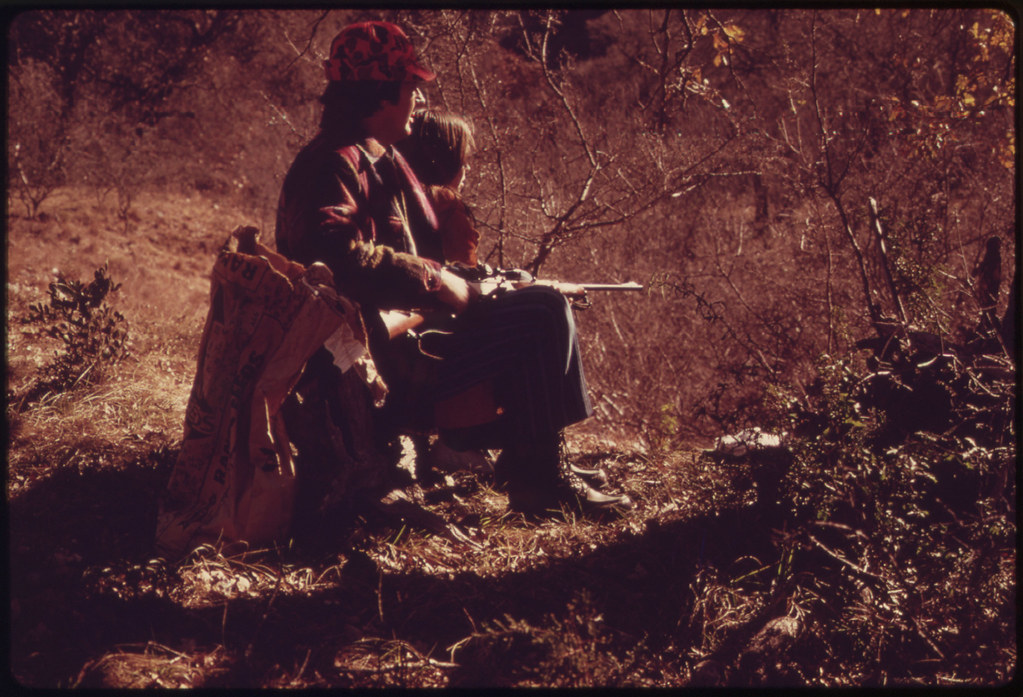
Hunter and daughter before sunset waiting for a deer. Some of the hunters leave food out for the animals before the season starts. Once the deer get into routine feeding, the hunters can shoot them without much effort. Near San Antonio: photo by Marc St. Gil, December 1973
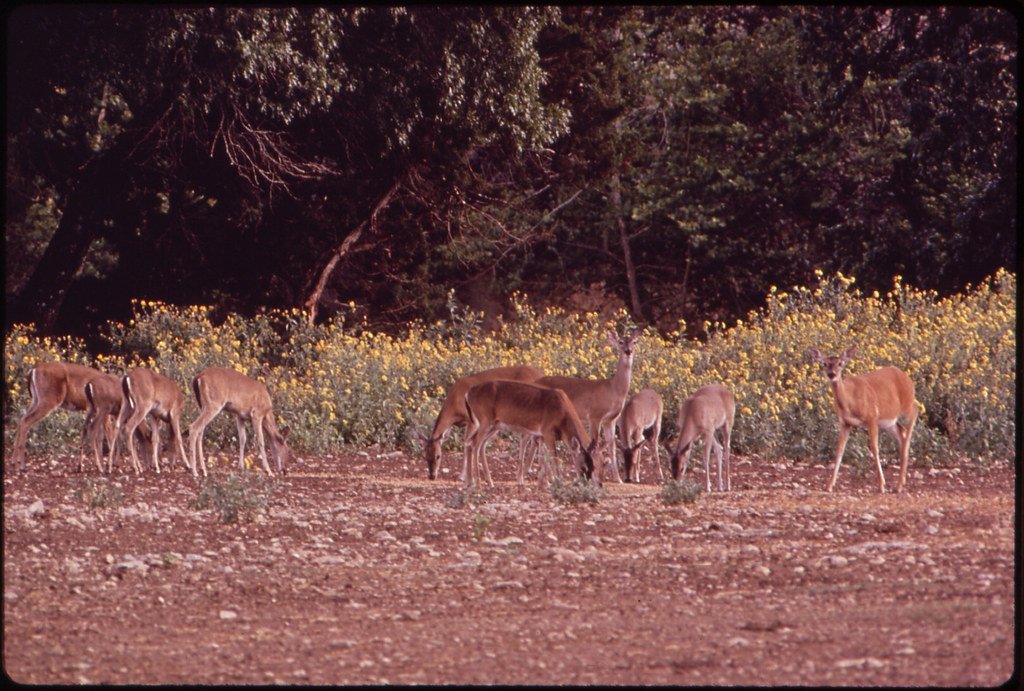
Wild deer at feeding spot near Leakey, Texas: photo by Marc St. Gil, June 1972
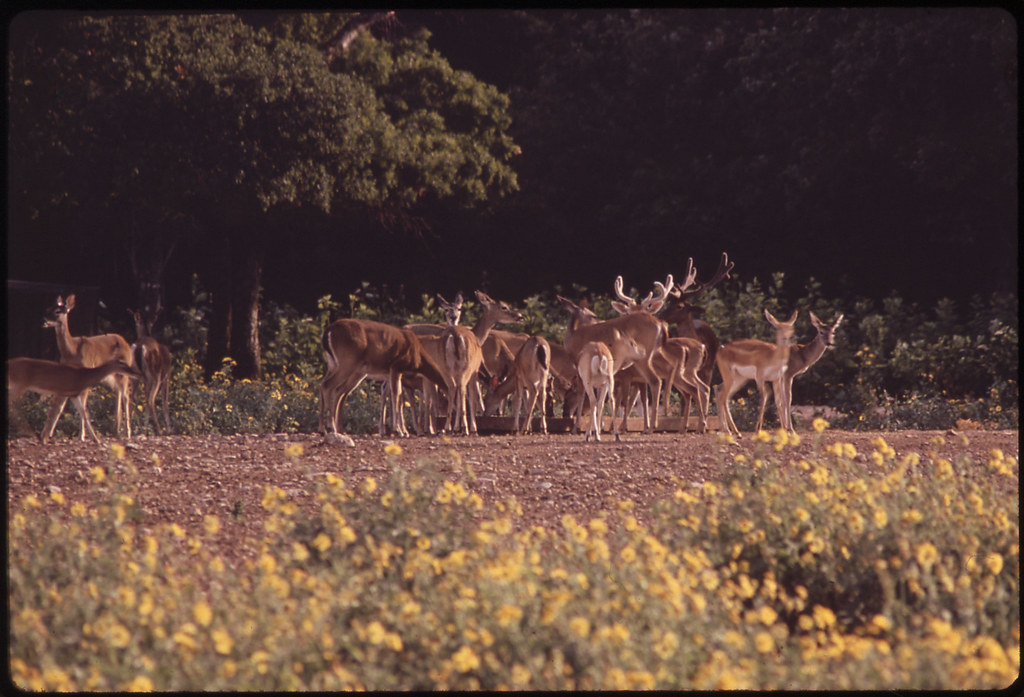
Wild deer in Garner State Park: photo by Marc St. Gil, July 1972
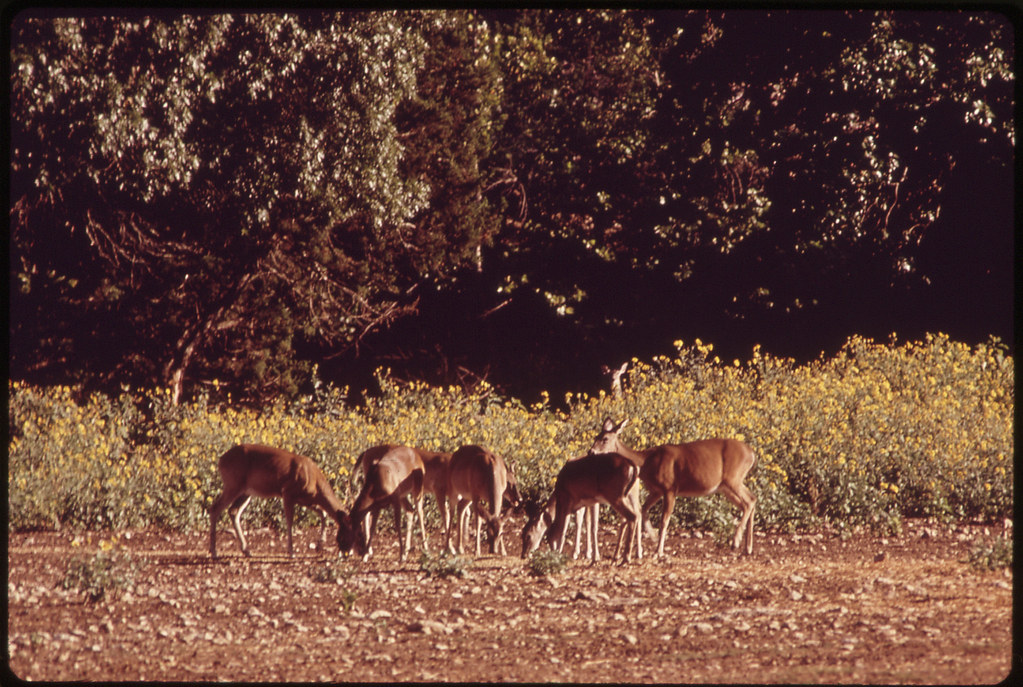
Wild fawn at their feeding place: photo by Marc St. Gil, June 1972
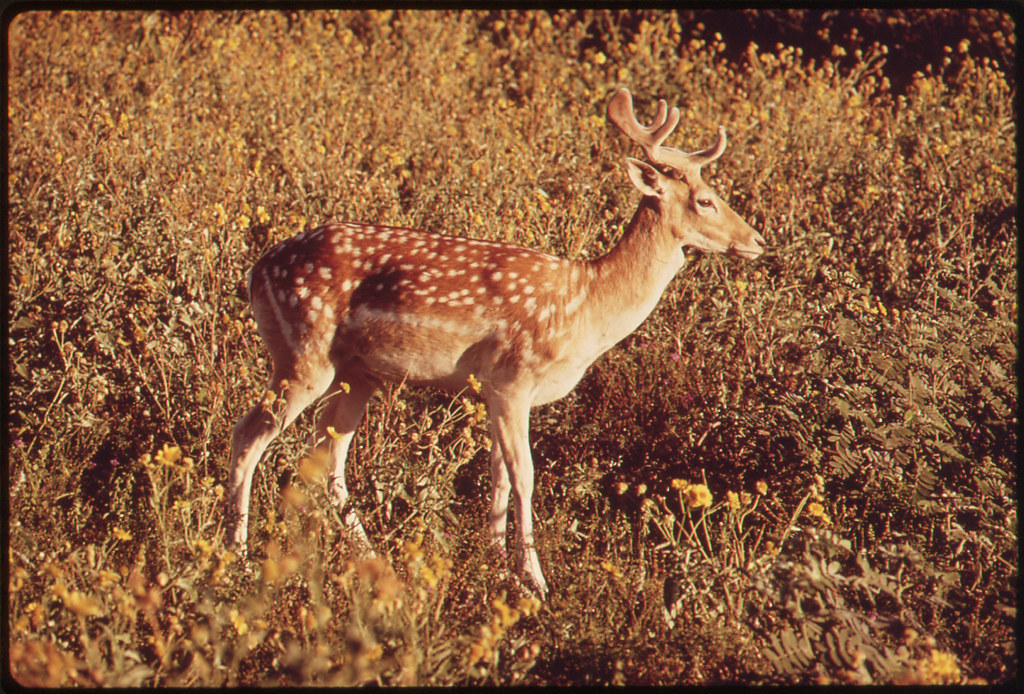
Wild deer: photo by Marc St. Gil, June 1972
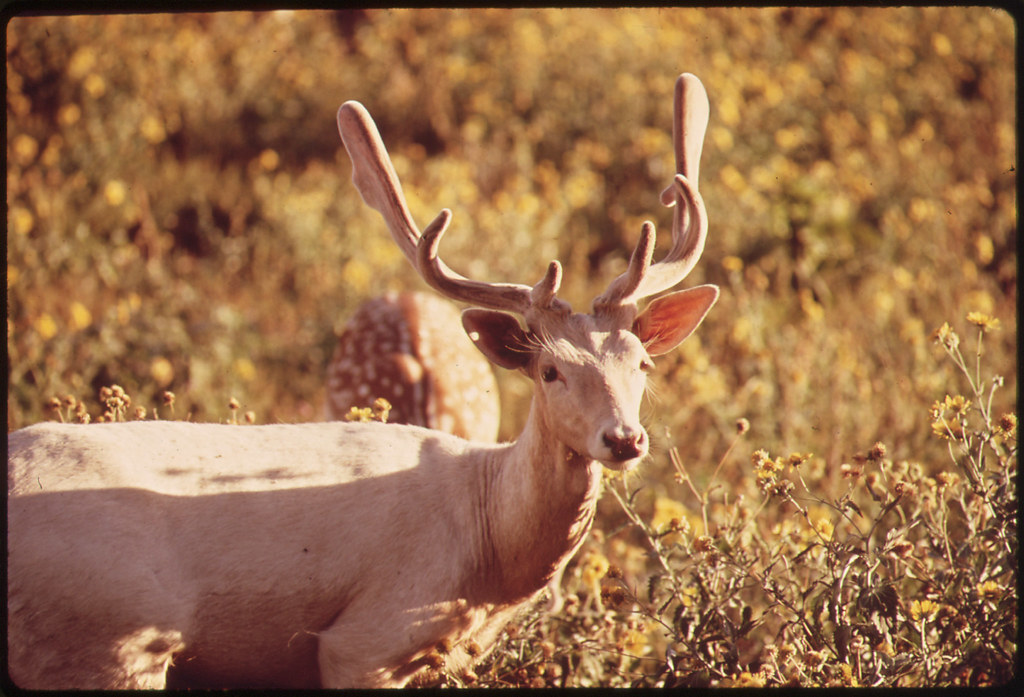
Wild deer: photo by Marc St. Gil, June 1972
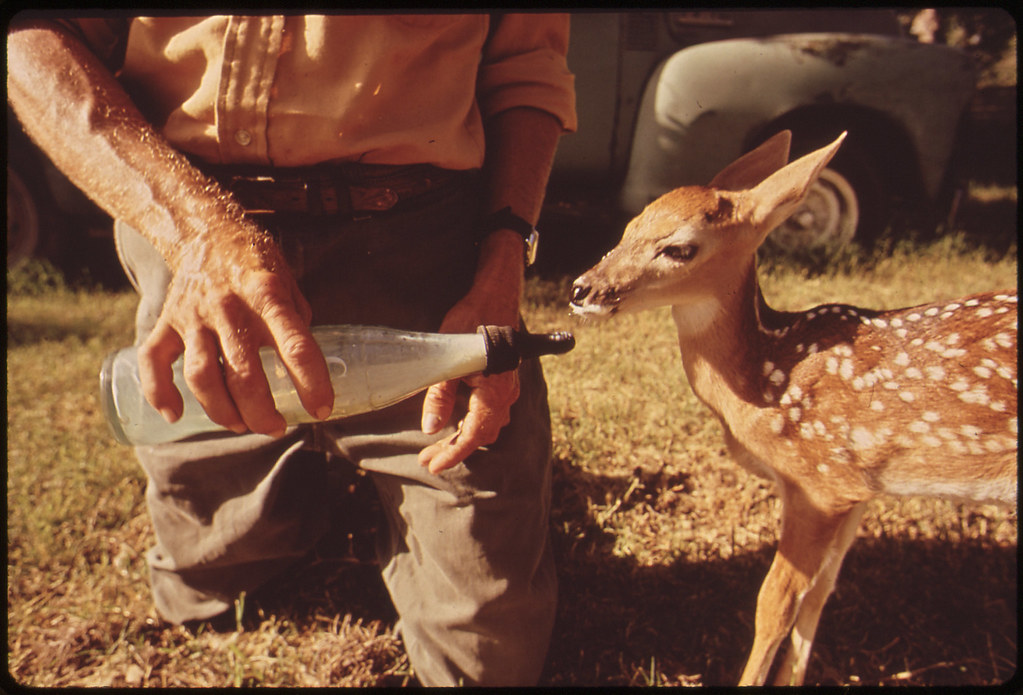
Garner State Park: photo by Marc St. Gil, July 1972

Deer hunters drink and play poker while waiting for wild deer. The hunters have built a permanent camp to which they return each year: photo by Marc St. Gil, November 1972
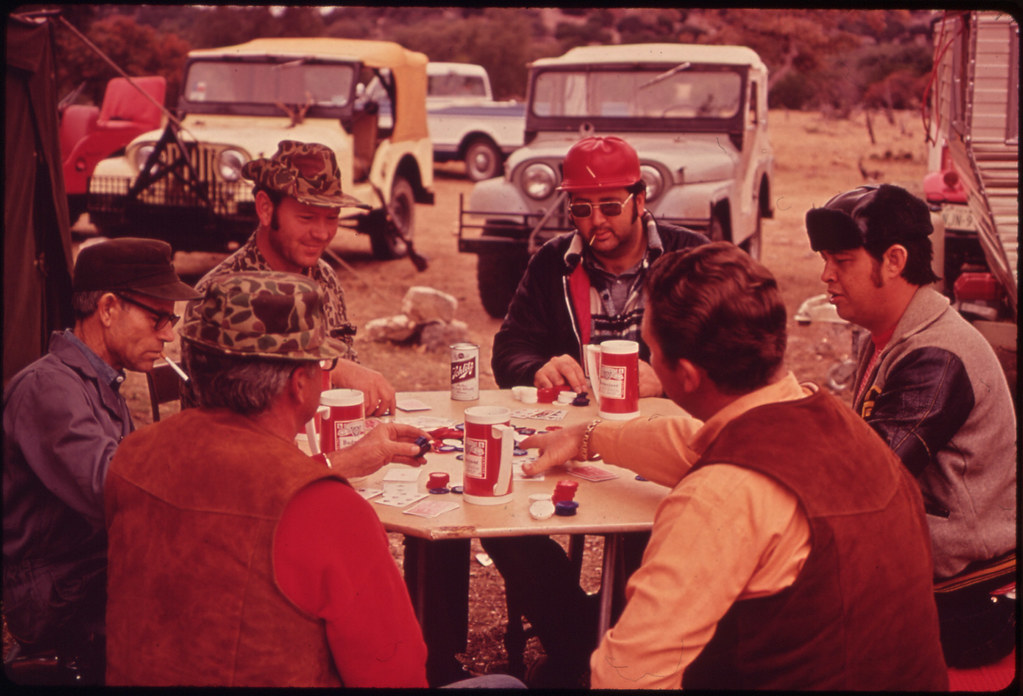
Deer hunters relax between kills at their permanent camp in and almost inaccessible part of the forest. They set up the camp through the use of jeeps and airlifts. They are (clockwise) Dr, Harold Wood (leather vest and camouflage hat), Jack Hilliard, Ken Davenport, Frank Stumbaugh, Larry Roming, and Malcolm Thornton: photo by Marc St. Gil, November 1972
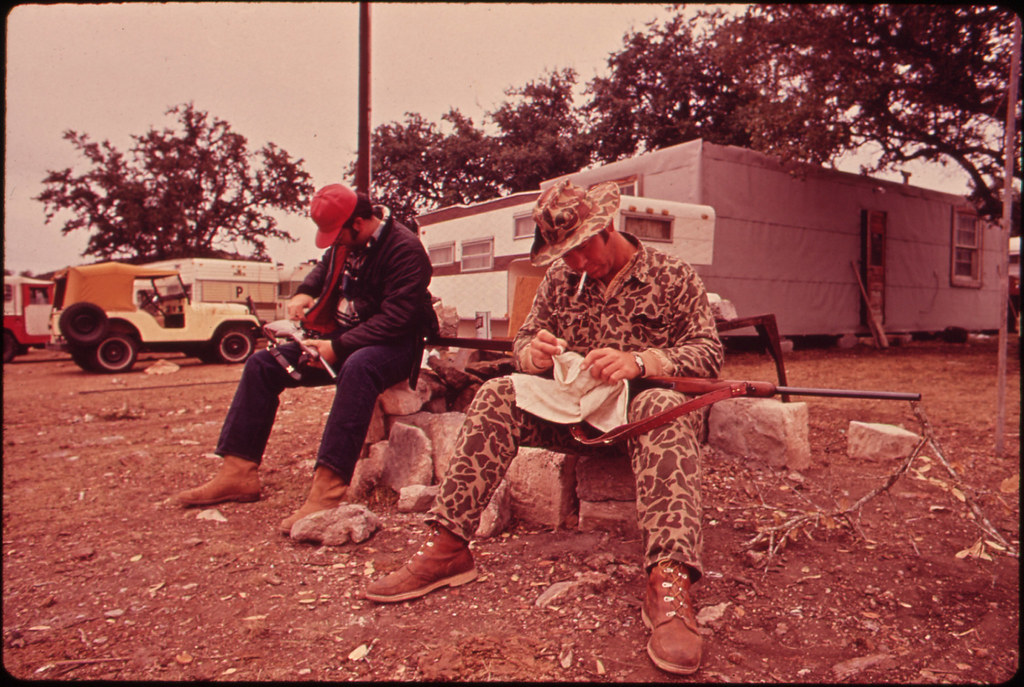
Larry Roming, 34, and Frank Stumbaugh, 27, at the hunters' permanent camp. The hunters fatten wild deer by leaving grain at their feeding places: photo by Marc St. Gil, November 1972
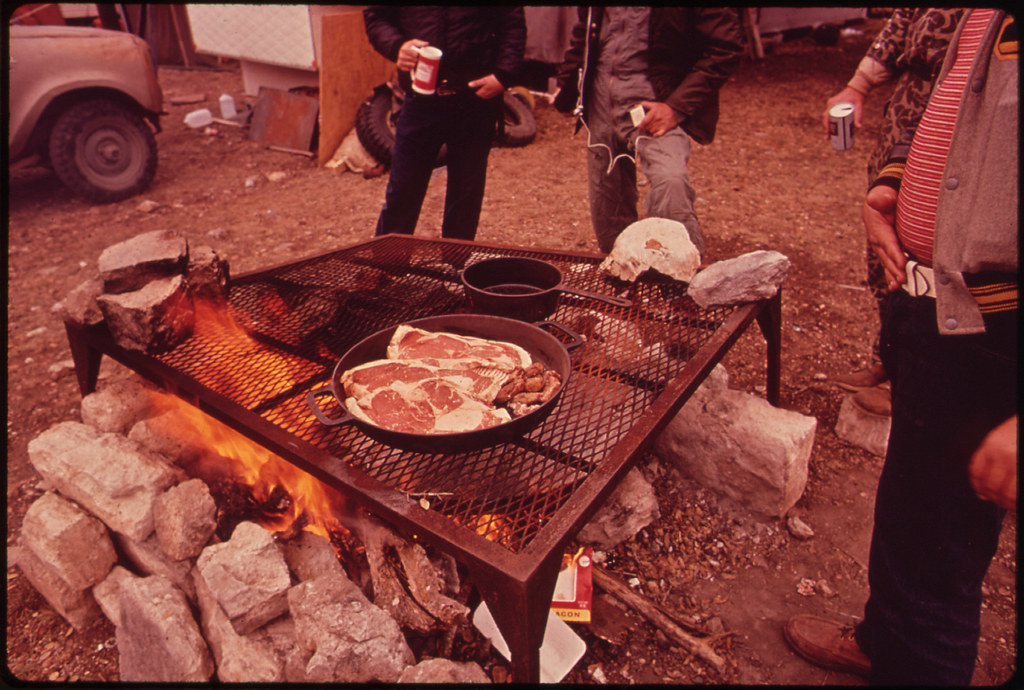
Deer hunters prepare their evening meal at the permanent camp they have constructed near wild deer feeding places: photo by Marc St. Gil, November 1972
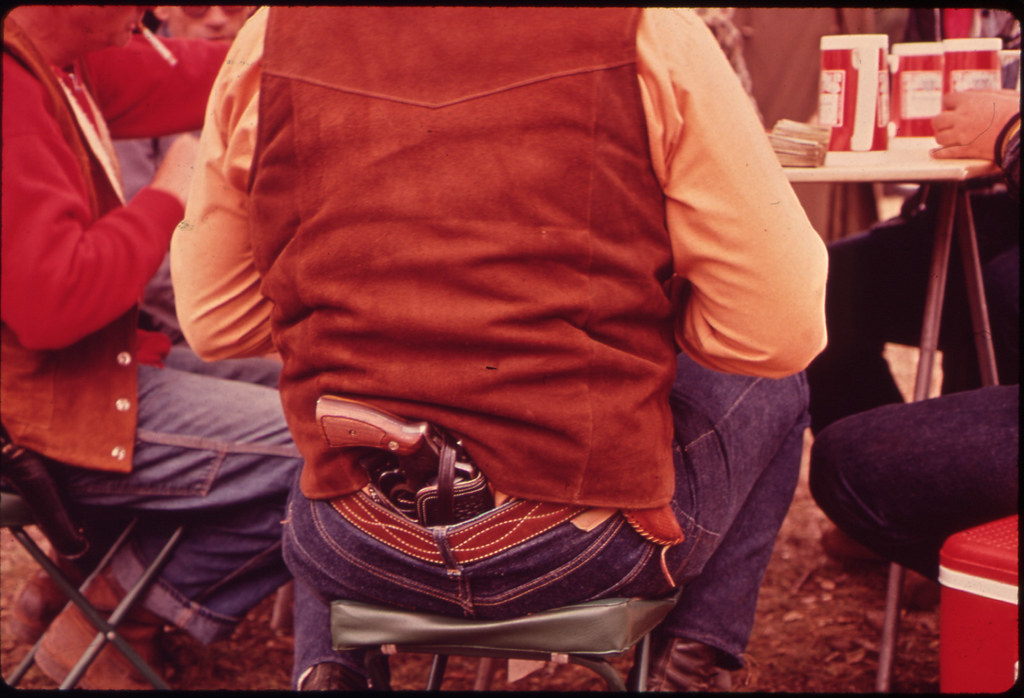
Jack Hilliard, deer hunter, wears his handgun while playing poker at the hunters' camp. He uses it to kill rattlesnakes in the forest: photo by Marc St. Gil, November 1972
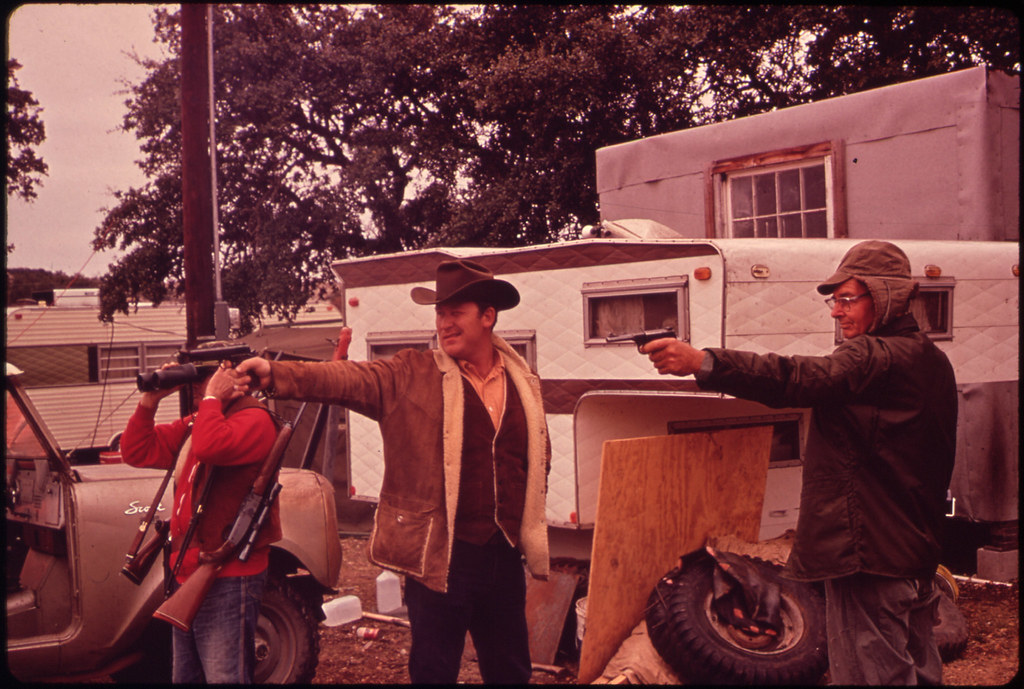
Deer hunters at their permanent camp amuse themselves between real kills. They leave grain at the deer's feeding places and wait until sunset when the deer come out to feed. Hiding behind deer blinds, the hunters find the animals an easy prey: photo by Marc St. Gil, November 1972
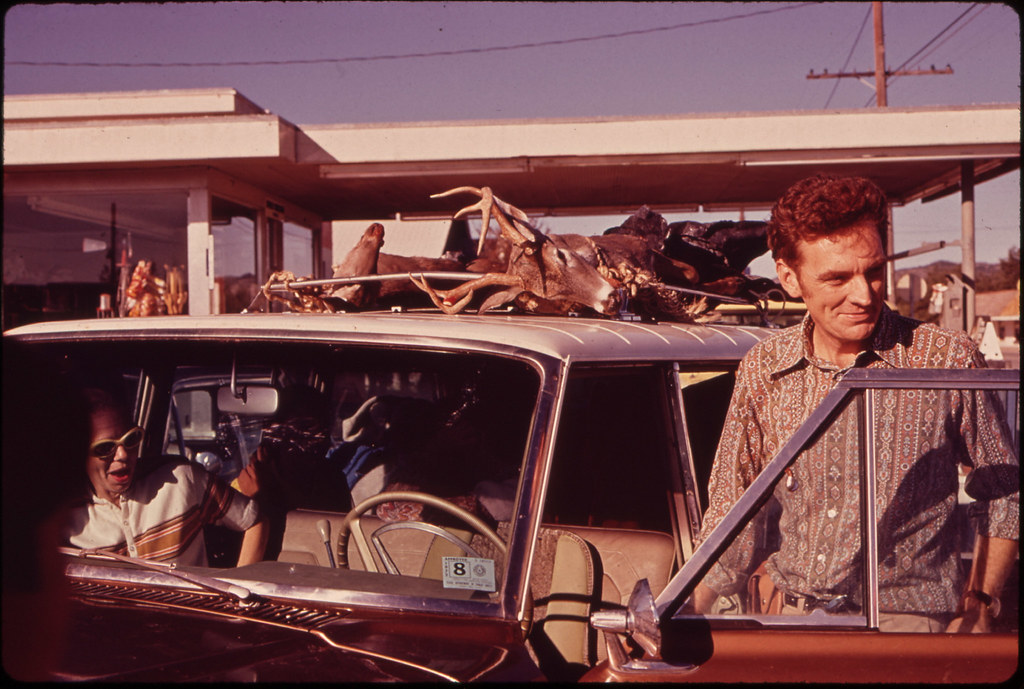
The first deer casualty of the hunting season is tied to the top of an automobile: photo by Marc St. Gil, November 1972
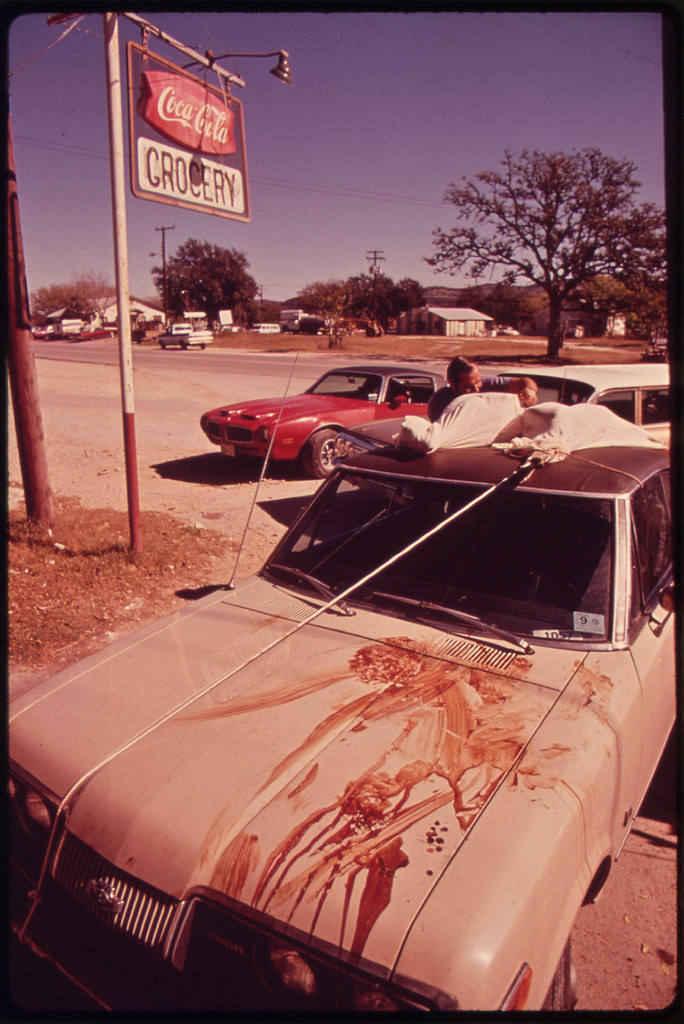
Blood was spattered on a car hood when a wild deer was tied to the roof. The deer are shot from behind blinds at their feeding places: photo by Marc St. Gil, November 1972

The first deer killed in the hunting season arrives at Deer Storage: photo by Marc St. Gil, November 1972

Deer Storage, Leakey: photo by Marc St. Gil, November 1972
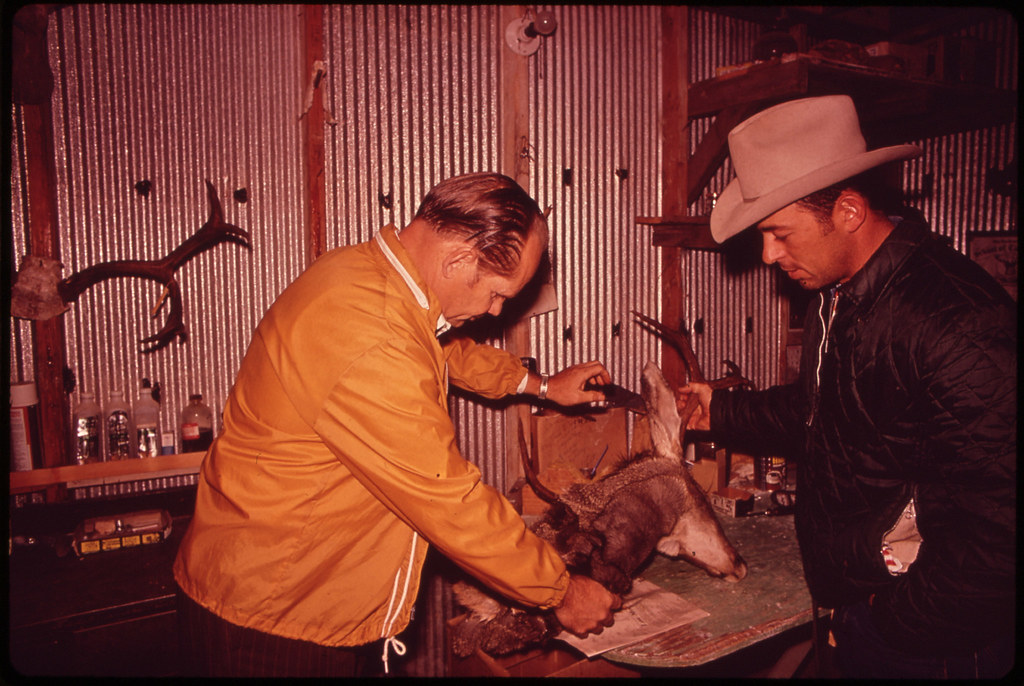
Reverend Harvey Hulsey, whose avocation is taxidermy, says he hates hunting. However, his taxidermy business is financially successful due to deer hunting: photo by Marc St. Gil, November 1972
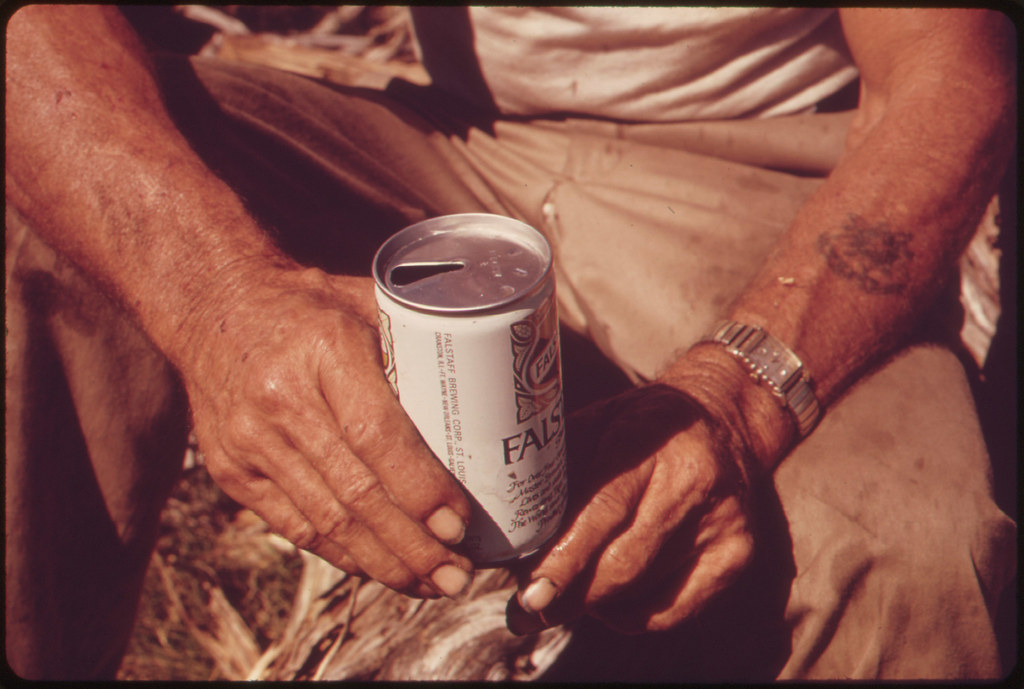
Hands of a Leakey, Texas resident holding a can of beer: photo by Marc St. Gil, May 1973
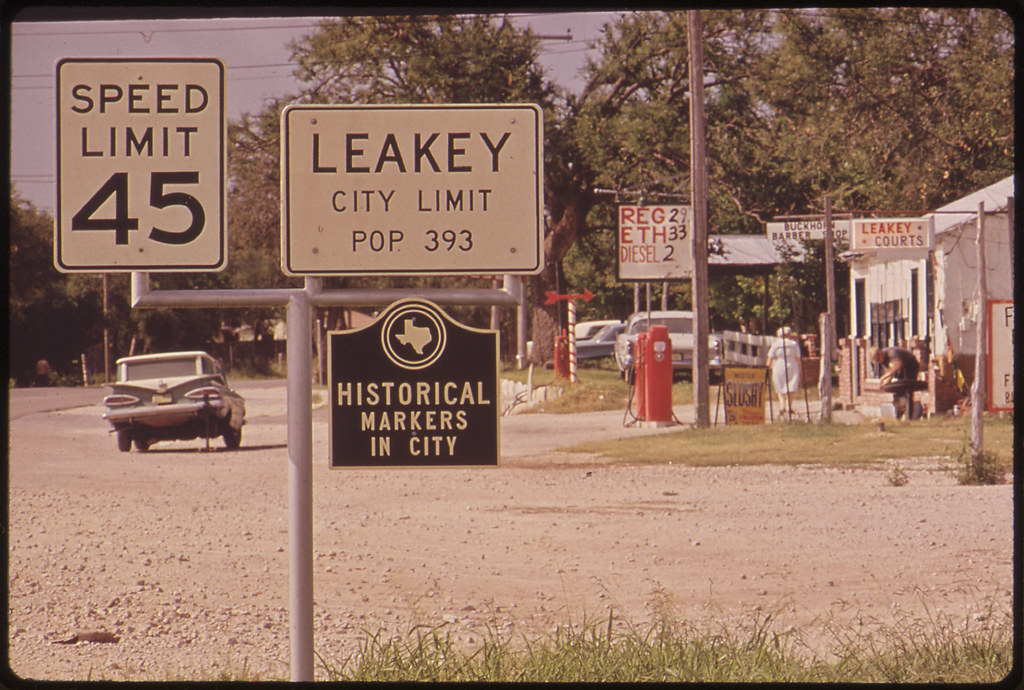
Leakey, Texas, a small town near Garner State Park, derives much of its income from summer tourists and fall deer hunters: photo by Marc St. Gil, July 1972
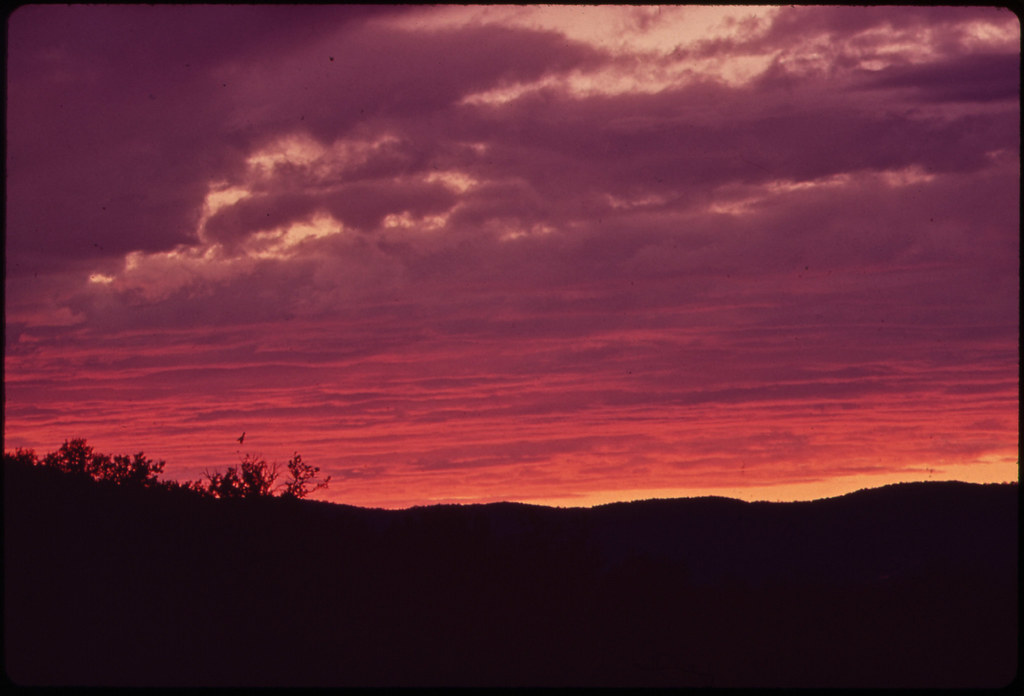
Sunset over the hills of Leakey: photo by Marc St. Gil, November 1972
Photos by March St. Gil (1924-1992) from the DOCUMERICA series, an Environmental Protection Agency program to photographically document subjects of environmental concern, compiled 1972-1977 (U.S. National Archives)



16 comments:
As with last week's "Diamond in the Back" posts, the seeds of which came from William De Vaughn's brilliant urban historical tune, the idea for this one came from songs that have been around for some time...
For those who may be interested:
Alison Kraus: Down to the River to Pray
OBWAT soundtrack version, new arrangement by Dave Mackey
And the text providing the title, "Wade in the Water" -- another chord.
This traditional gospel song, a spiritual first published by the Fisk Jubilee Singers in 1901, has both Old and New Testament textual sources, referring to the account in Exodus:14 of the Israelites' escape out of Egypt, and, in the chorus, to the tale of riverine healing from John 5:4: "For an angel went down at a certain season into the pool, and troubled the water: whosoever then first after the troubling of the water stepped in was made whole of whatsoever disease he had."
The song is thought by some to be a coded memorial to the plight of fugitive slaves being tracked by pursuing hound-dogs, which would be thrown off the trace by immersion in water.
Wade in the Water
Wade in the water.
Wade in the water, children now
Wade in the water.
Don't you know that God's gonna trouble the water?
Don't you know that God's gonna trouble the water?
I stepped in water, and the water was cold.
Don't you know that God's gonna trouble the water?
Said it chilled my body, but not my soul.
Don't you know that God's gonna trouble the water?
Wade in the water.
Wade in the water, children now
Wade in the water.
Don't you know that God's gonna trouble the water?
Don't you know that God's gonna trouble the water?
Well, I went to the water one day to pray.
Don't you know that God's gonna trouble the water?
And my soul got happy, and I stayed all day.
Don't you know that God's gonna trouble the water?
(Help me Sing!)
Wade in the water.
Wade in the water, children now
Wade in the water.
Don't you know that God's gonna trouble the water?
God's gonna trouble the water
Don't you know that God's gonna trouble the water?
God's gonna trouble the water
There is love (In the water)
In the water (In the water)
There is joy, yeah (In the water)
In your water yeah (In the water)
Your peace (In the water)
Is in the water (In the water)
Your deliverance (In the water)
Is in the water, yeah (In the water)
Oh step in, step in (In the water)
Joy is in the water (In the water)
In the water yeah (In the water)
Oh step in, step in (In the water)
Love is in the water (In the water)
Oh step in yeah (In the water)
For deliverance (In the water)
Everything yeah (In the water)
In the water yeah
Everything that you need
(In the water)
Everything that you need
(In the water)
Everything that you need
(In the water)
Everything that you need
(In the water)
Everything that you need
(In the water)
Everything that you need
(In the water)
Everything that you need
(In the water)
Everything that you need
(In the water)
God's gonna trouble the water.
God's gonna trouble the water.
(Yeah, yeah, yeah, yeah, yeah!)
God's gonna trouble the water.
(Ooh)
God's gonna trouble the water.
Oh wade in the water.
Maybe it's cause I was an East coast city-and-city-suburbs boy, but when I was stationed in the service in Texas in 1962 it was a revelatory, and as these photos evoke, slightly frightening proposition. I was turning 20 and felt perfectly safe on the most impoverished city streets, but in small town Texas, I felt like I had a target on my back.
Tale of Two Larrys.
Reminds me of the work of Larry Clark, and Larry Fink, maybe a little Christenberry and William Eggleston thrown in.
What is it about these Southern photographers, that they get so tangled up in the get-down-and-dirty?
Bleed, baby, bleed.
Tom,
Wade in the water, T for Texas (L for Leaky), where commode bangs and teenage girls smoke pot (way back then, in living Kodak color).
1.14
light coming into sky above black plane
of ridge, shadowed green of leaf moving
in foreground, wave sounding in channel
matter of charged particles,
consistent with facts
gravitational field “formed,”
pointed out, which is
blue white of sky to the left of point,
whiteness of gull on tip of GROIN sign
Swell to hear from you Michael, Curtis, Steve.
Impossible not to love that idea of a Commode Bang,
gravitational field “formed,”
how evocative --
Will that be a double or a single bang, sir? With or without the continental rattlesnake wakeup call?
Speaking of wakeup -- waking up in the Army anyway, but in Texas -- yegads.
All the ROTC commissioned officers of my day (59-60-61) came from Texas... good reason to stay in school. Any school.
But that nervous target on the back feeling -- for that matter eerily descriptive also of the everyday urban reality feeling in the good old American here and now.
Texas has always seemed a cartoon gigantism version of the USA. Baptism, Redemption and Salvation steeped in muddy waters and animal blood -- this must be our chalice as a culture, thank you Lord.
Here in the land where unlimited rounds per mag are every godfearing citizen's divine right. Godless Communists like Joe Biden notwithstanding. Feed the deer, let 'em get to know you, then bang -- the David Lynch Storage Locker.
Those Wade in the Water lyrics, by the way, diverge in the early 19th c. into several parallel but not identical streams, differing subtly in the particulars of the Biblical specifics.
My favourite "oldtime" version of the song:
Staples Singers: Wade in the Water
Wade in the water.
Wade in the water, children.
Wade in the water.
God's gonna trouble the water.
Well, who are these children all dressed in red?
God's a-gonna trouble the water
Must be the children that Moses led
God's a-gonna trouble the water.
Chorus
Who's that young girl dressed in white
Wade in the Water
Must be the Children of Israelites
God's gonna trouble the Water.
Chorus
Jordan's water is chilly and cold.
God's gonna trouble the water.
It chills the body, but not the soul.
God's gonna trouble the water.
Chorus
If you get there before I do.
God's gonna trouble the water.
Tell all of my friends I'm coming too.
God's gonna trouble the water.
Chorus
See that ban' all dress'd in white?
It look lak the childr'n of the Israelite.
See that ban' all dress'd in red?
It look lak the ban' that Moses led.
Wade in de water
Wade in de water,
Wade in de water.
God's a-gonna trouble de water.
I stepped in water and the water is cold
Don't you know that
God's gonna trouble the water
Said it chilled my body but not my soul
Don't you know that
God's gonna trouble the water
Chorus
Well I went to the water one day to pray
Don't you know that
God's gonna trouble the water
And my soul got happy and I stayed all day
Don't you know that
God's gonna trouble the water
Curtis, about the photographers on this project, that's an interesting story.
Photographers -- professional photojournalists, including a number from National Geographic -- were assigned to work in regions of country where they knew the ground. An enterprising and industrious fellow named Gifford Hampshire, who'd been a p.r. exec with a camera company, a National Geographic photo editor and a speechwriter for the FDA and USIA, sold the idea of a documentary photo survey on environmental issues to William Ruckelshaus, the first EPA director. The project had the energy of the new Agency and in many ways it was the best thing the Agency ever accomplished. Starting in '72 photographers were contracted at $150/day plus film (usually color slide) and expenses.
The photographers sent their film to regional labs for processing, did their own edits and then the edited slides went on to DC, where Agency staff picked out the shots that would go into the Documerica file. Photographers were fully credited for accepted images; rejected images remained their property.
The model of the FSA was commonly acknowledged in all this, with the point of focus (subject matter) changed from poverty to environment. Hampshire's motto for the project was Barry Commoner`s first law of ecology: "Everything is connected to everything else." The ostensible subjects would be e.g. rampant freelance land development, urban blight in the decaying large cities, air, noise, and water pollution. But as with the FSA, considerable liberty was given the photographers, and finally they shot what what they chose to shoot. Marc St. Gil was documenting industrial pollution in Texas when he took this side trip to Leakey that provided some of the most potent images of the 20,000 or so in the project files.
There were money problems from the first, to start with a great deal of wrangling over individual photographers' fees with the American Society of Magazine Photographers. Increasingly there was the question of how to pay the bills. A year or so into things there was administrative reorganization, Arthur Rothstein was brought in to help shape the project, hire photographers and design missions and it was at that point the affinity with the FSA turned into something more like a lineage.
In the mid 70s Hampshire had serious health problems and what with continuing funding problems, the project began to flag. By 1975 it was pretty much over, though images were added to the file on up to 1977. It is an incredible resource, a window into the historical wall, one that did not stay open for long but provided a terrific vantage during its too brief half-life.
Leakey, Texas
Dear oh dear I do declare,
I hope that toked-up Chevy’s
Driver scored that missing spare,
Took another toke and hopped,
And hopped the hell outta there!
In any season the Texas Hill Country is one of the most beautiful parts of a beautiful state. I swam in and floated down rivers like the Frio. I lived right where the West begins, on the banks of the Comal River, which flows (still, I hope) along the Balcones fault line, the first major geological uplift between the Hill Country and the Gulf Coast. It’s upslope all the way from there to the Continental Divide. St. Gil’s photos bring to mind the pleasures I found: the immense open sky, the wild flowers in spring, the sub-tropic nights, the brilliant scorching days, the beautiful women, the weed, and whatever else. Texas over the years has been a mixed bag politically. Garner State Park, featured here, is named for James Nance Garner, FDR’s VP. Ralph Yarborough was a liberal Congressional leader during the conservative Fifties; and there’s LBJ, of course, liberal in domestic policies though an imperialist and warmonger as devoted to the military-industrial complex as any bi-coastal urbanite. Texas today is just one reactionary state in a reactionary nation.
Hazen, thanks for the memories, which help to balance the view here a bit. And the photographer's portfolio did indeed include some lovely shots of a milieu and place of common habitation that could without too much exaggeration be called golden (even adjusting the view for the rose-coloured glasses effect).
The nagging reminder that this would also be a place of common habitation for those wild deer bagged for "amusement", that left a different sort of taste. I run into wild deer now and then at night and immediately understand two things -- first that these are creatures far superior to me in beauty and grace, and second that something seems to have taught them that contact with humans is bad medicine, plain and simple. To even think of shooting them for "sport" seems an idea that degrades the presumed thinker. And cozying up to them with feed lures and then waiting over beers and cards and impromptu handgun exercises at the man's-own-camp for a chance to blast away -- what is there to say.
(Few loaded rifle racks around here, but the speedway vehicles are far more lethal in any case.)
Vassilis, I too would probably want to vamoose, once the shooting-of-anything-that-moves got going. Too much karma in that storage locker.
It was interesting to learn that Leakey, over the (nearly) century-and-a-half of its modest existence, has had a pretty stable population, usually in the low hundreds (as also now). I get the impression of a place people must in some way like to live in, an affection they express by staying.
At any rate I am an outsider and ought not judge the ways of the place. I was grateful for the objectivity with which Marc St. Gil approached these scenes. I learned from that, and was made to think. That's the one sport at which I'm still able to apply myself these days.
Tom, I’m with you and the deer. The so called sport of hunting—destroying the life of another animal for the thrill of it, for one’s pleasure—strikes me as obscene. The excuse that one eats what one kills, or gives it to the needy, is ethically baseless. Hunting has some validity when one’s day-to-day survival depends on it for food. Grain-baiting deer, as St. Gil’s men-with-guns do, is no sport at all. It's not even hunting.
The blood on the bonnet echoed in the sunset; polarities perfectly figured here.
The blood spilled atop and the blood swirling beneath the bonnet, in the sunset.
In the dialectic of the visual story, what countermovement can follow -- or in therapeutic terms, what would comprise an antidote?
George Herbert: Vertue
great photos --a kind of shock to look at,
parts of the memory jolted back to life.
I have heard that song, Wade in the water . . .
A few nights of honest reflection (wading in the water of reality) -- along with several conversations with people who've been in Texas lately -- have brought me round to the shocking recognition that insofar as liveability goes (a long way), Texas currently has it all over this ruined province that takes up the space on the map between Oregon and Mexico.
As someone intimate with conditions in both places put it: "Texas has less people, more space, and... (long pause) actual functioning infrastructure!"
I was lucky to be a friend of the photographer, Marc St. Gil. He was a fascinating person. He was Dutch and had traveled the world as a photojournalist. He lived in Houston during the 70's and 80's. It's great to see his pictures again.
And we are lucky to be hearing from you, citizenj. Marc St Gil was indeed among the greatest of photojournalists. And your comment reminds us that this series remains testament to his genius.
Perhaps in seeking a clear view of American reality it has always helped to have that special bit of distance (a sense of strangeness, even) that comes of seeing through slightly "foreign" eyes.
The uniqueness of the culture, its uncommon commonness, its seemingly impregnable yet at the same time curiously transparent mystery -- all these things stand out in the Leakey portfolio.
Post a Comment